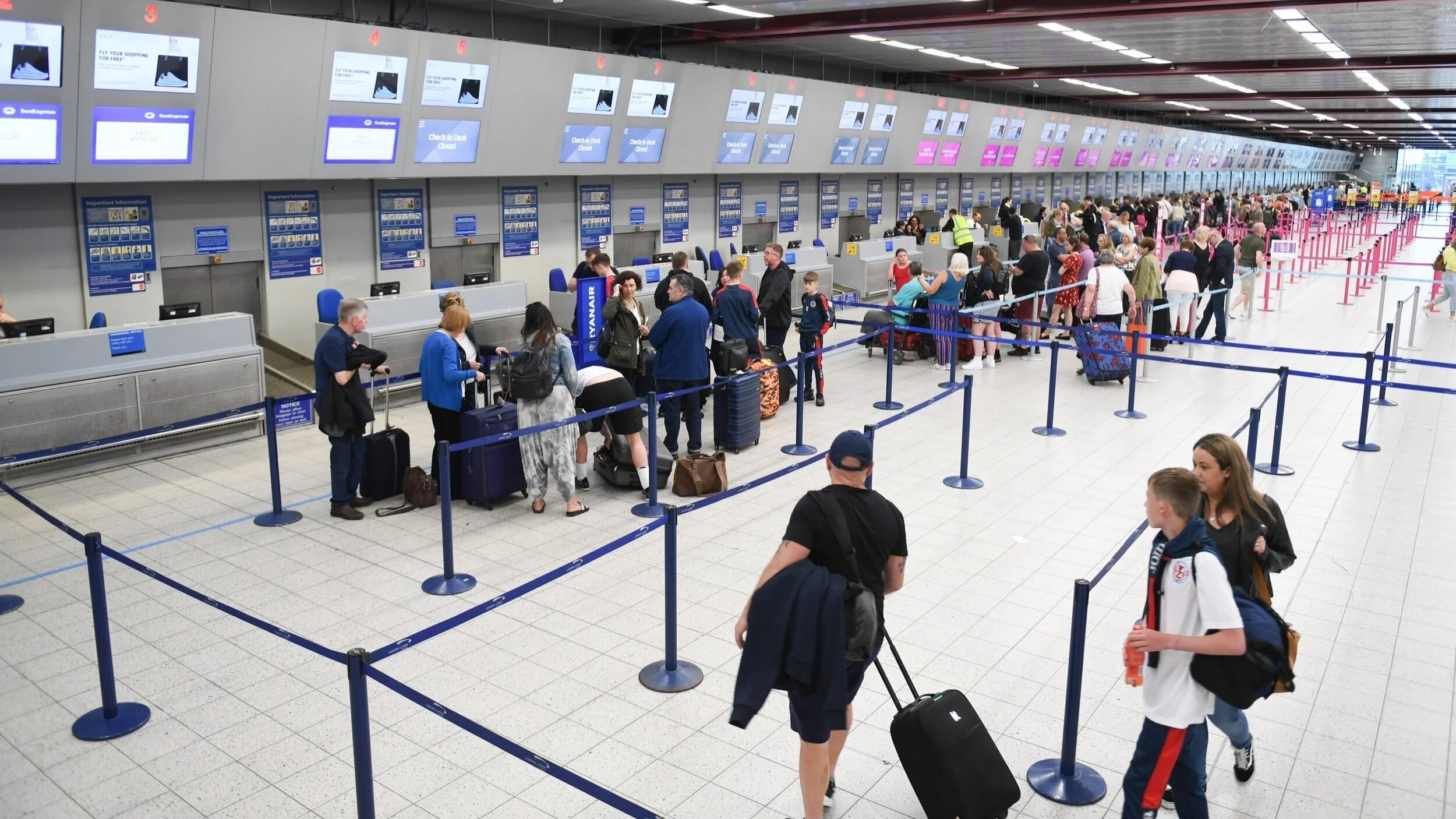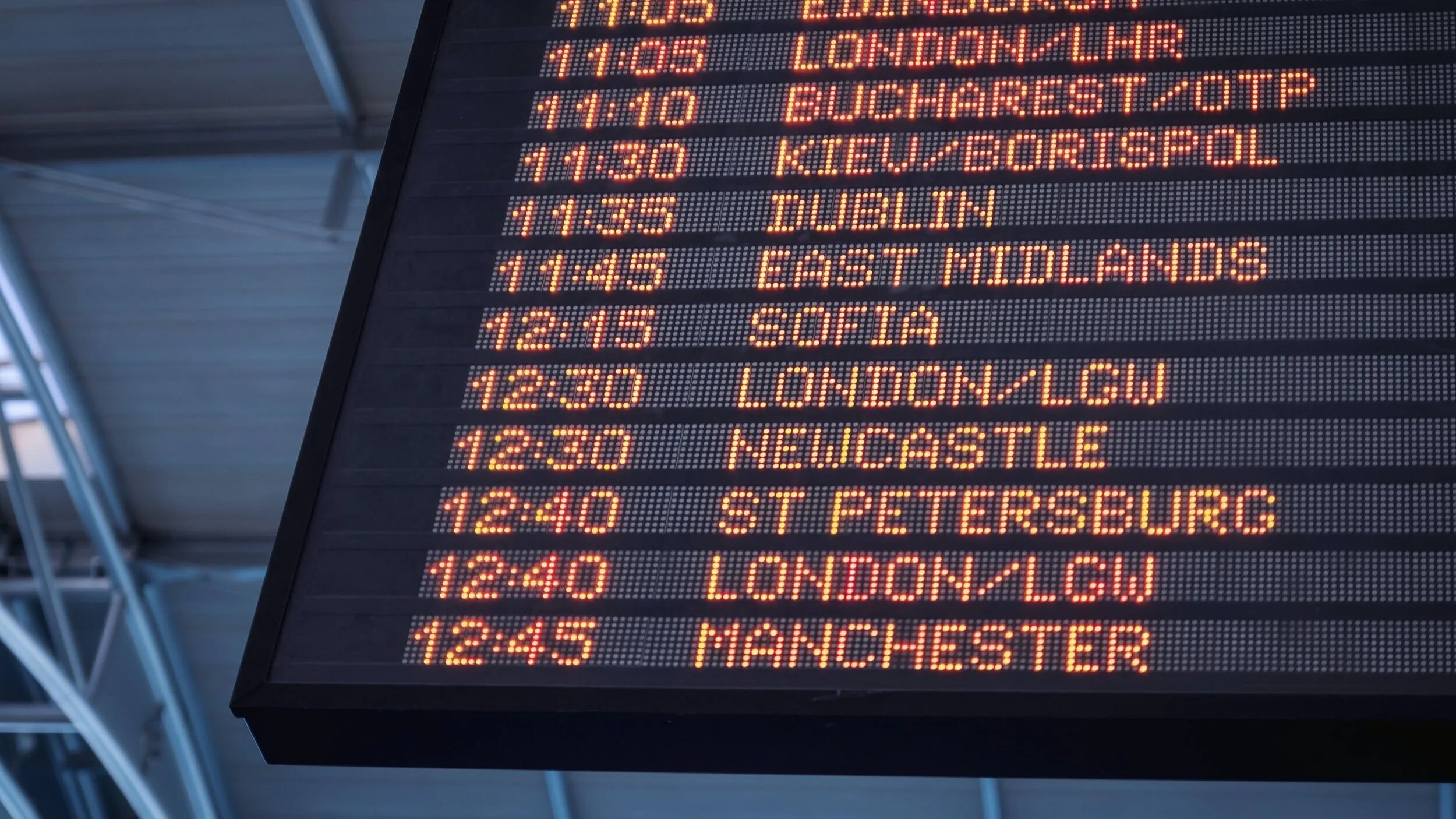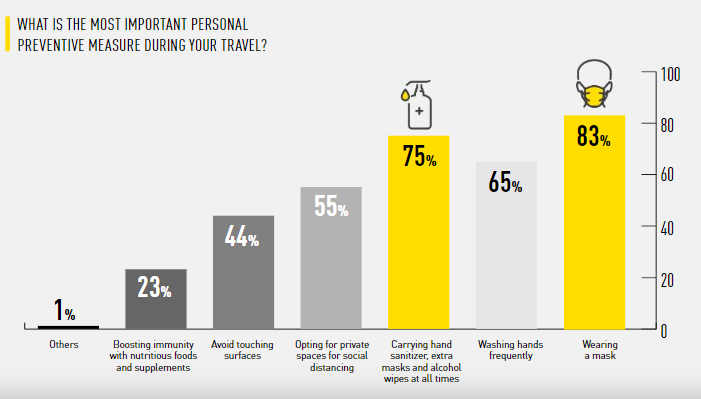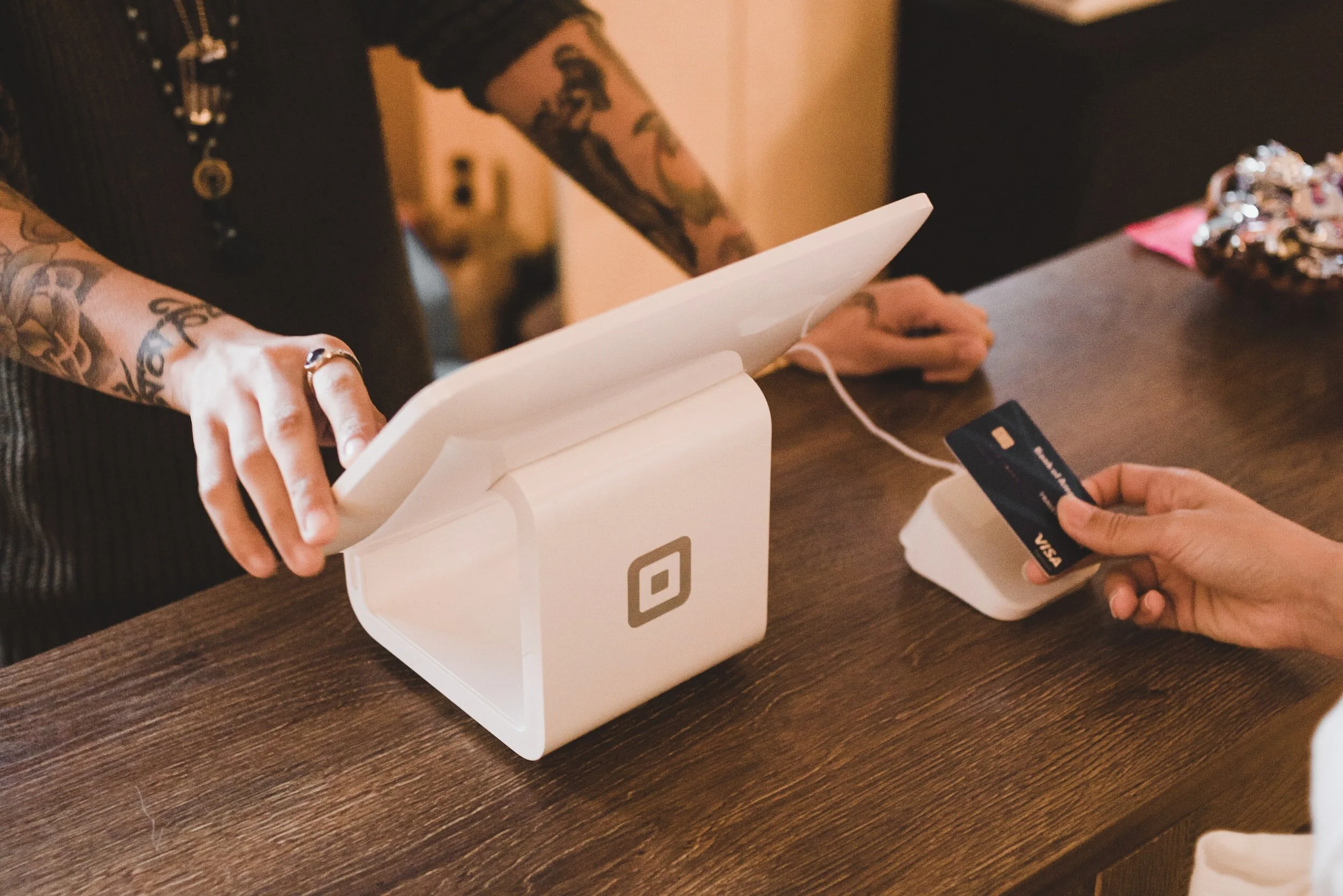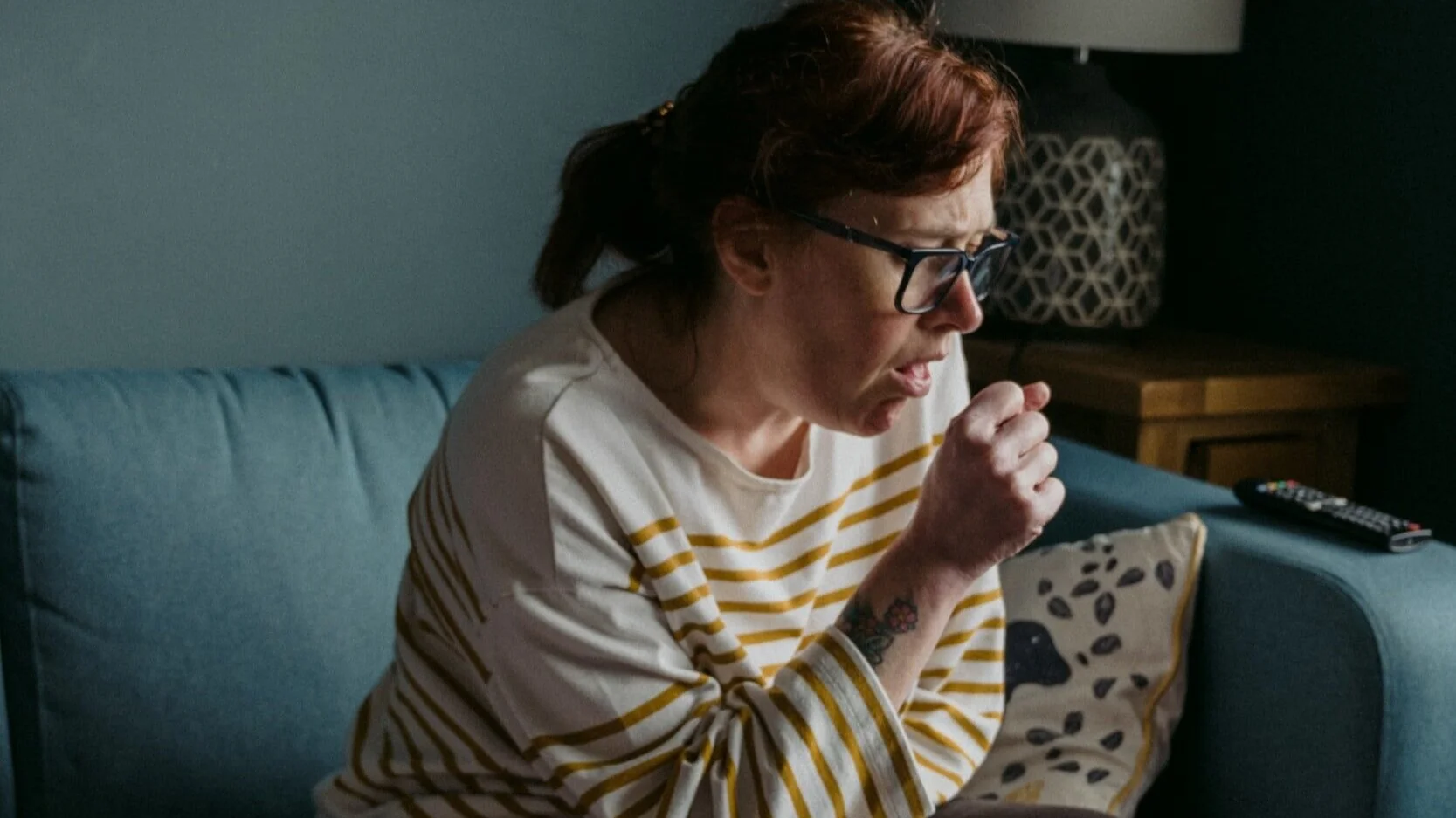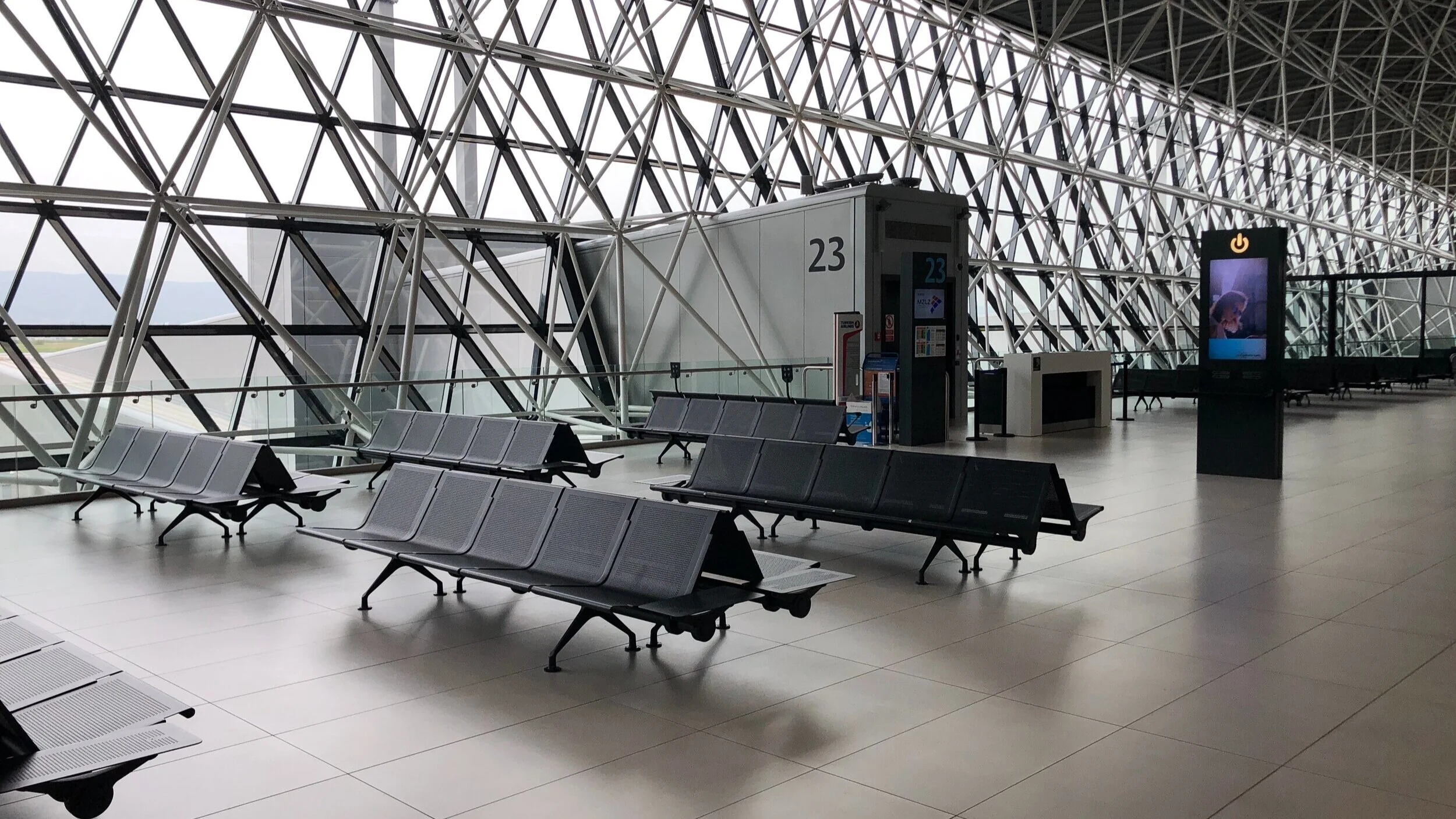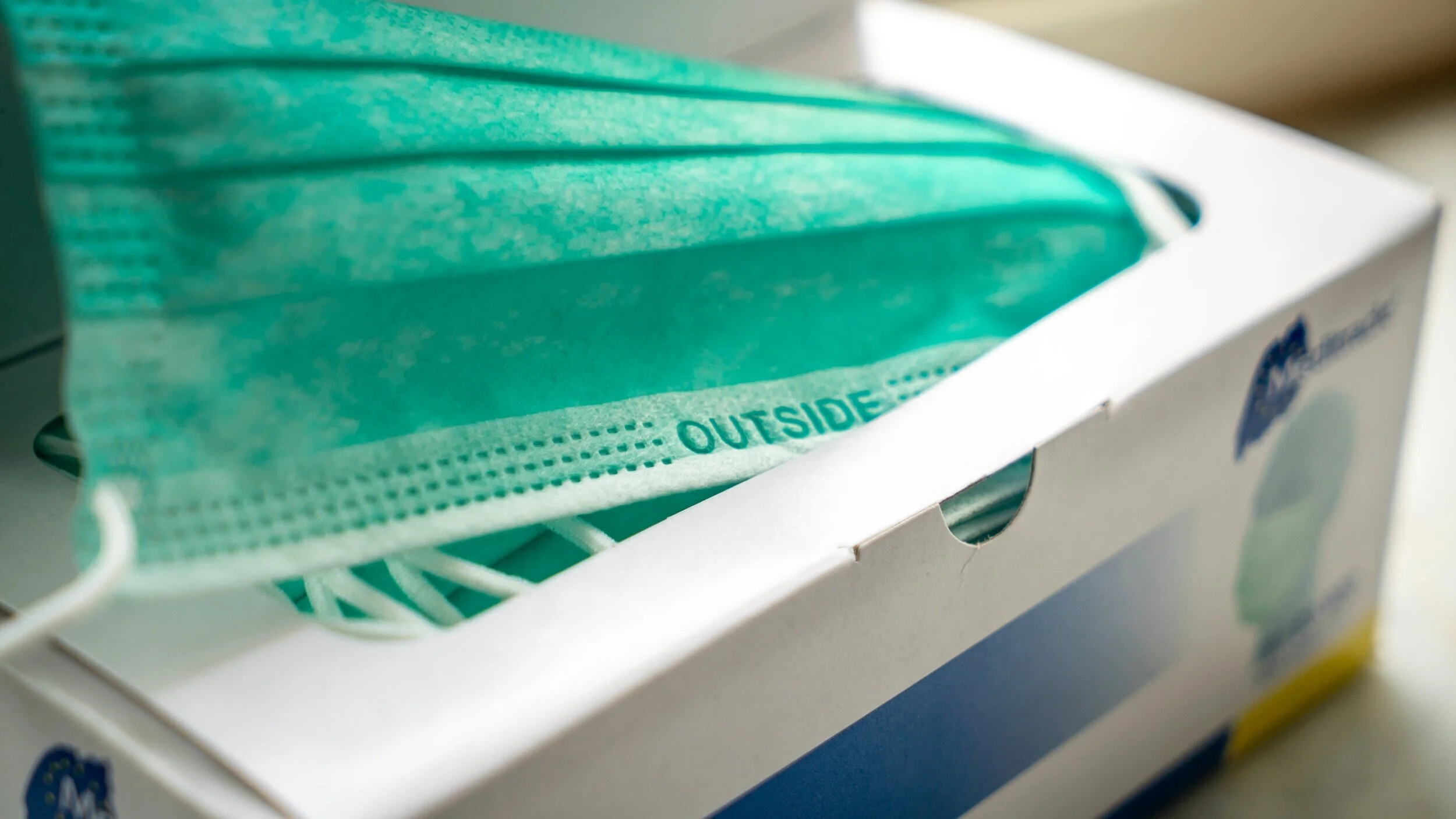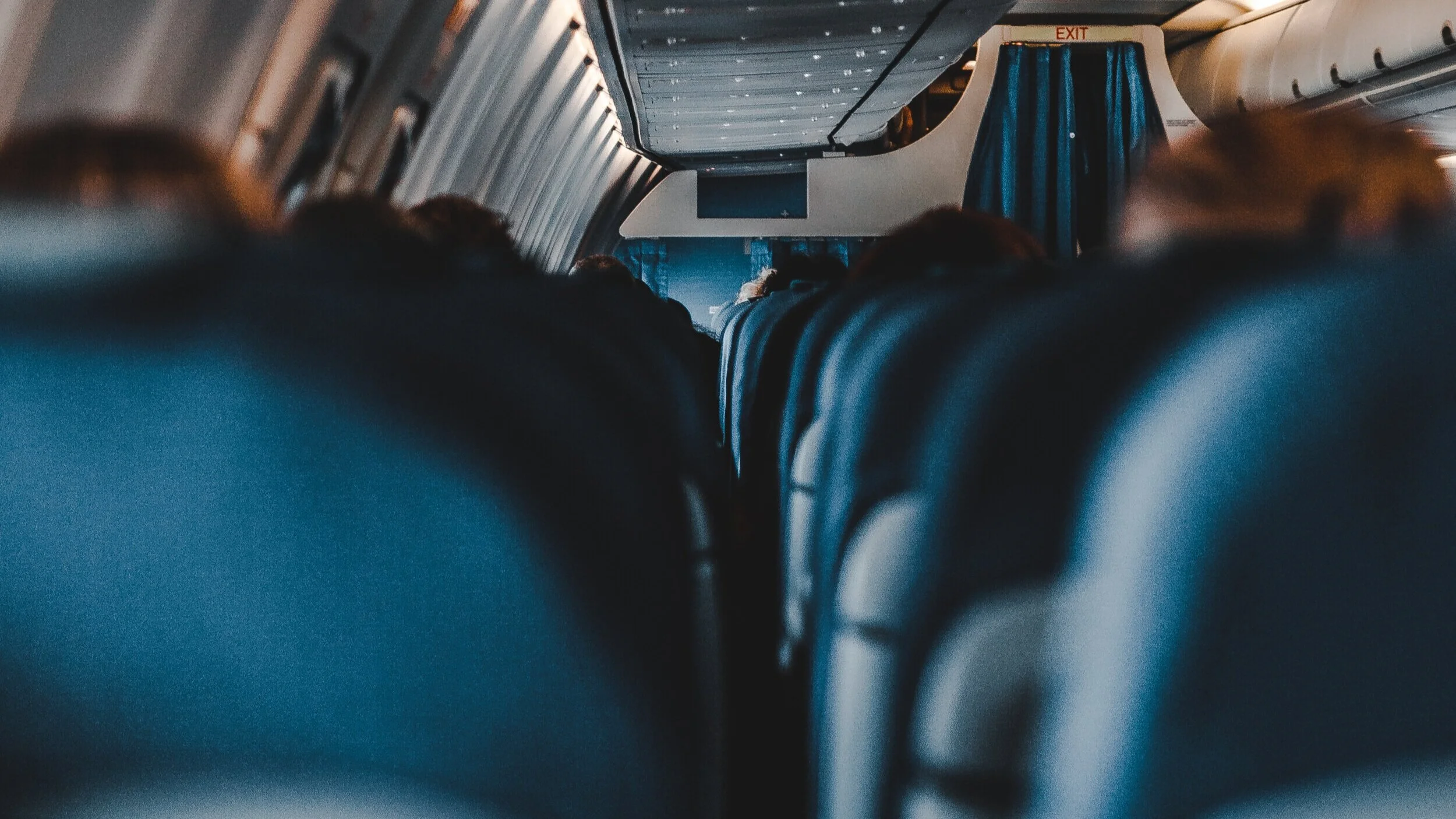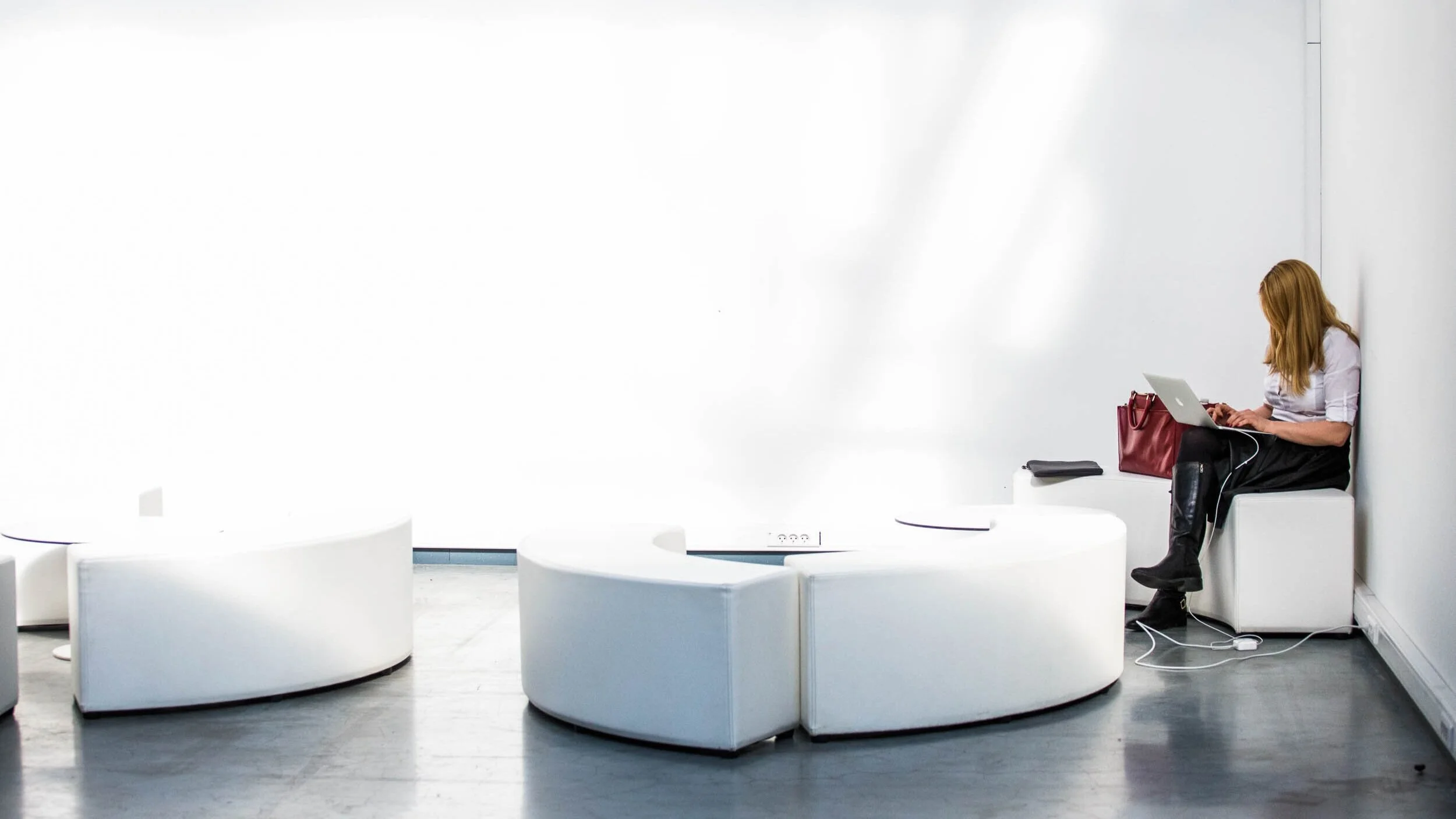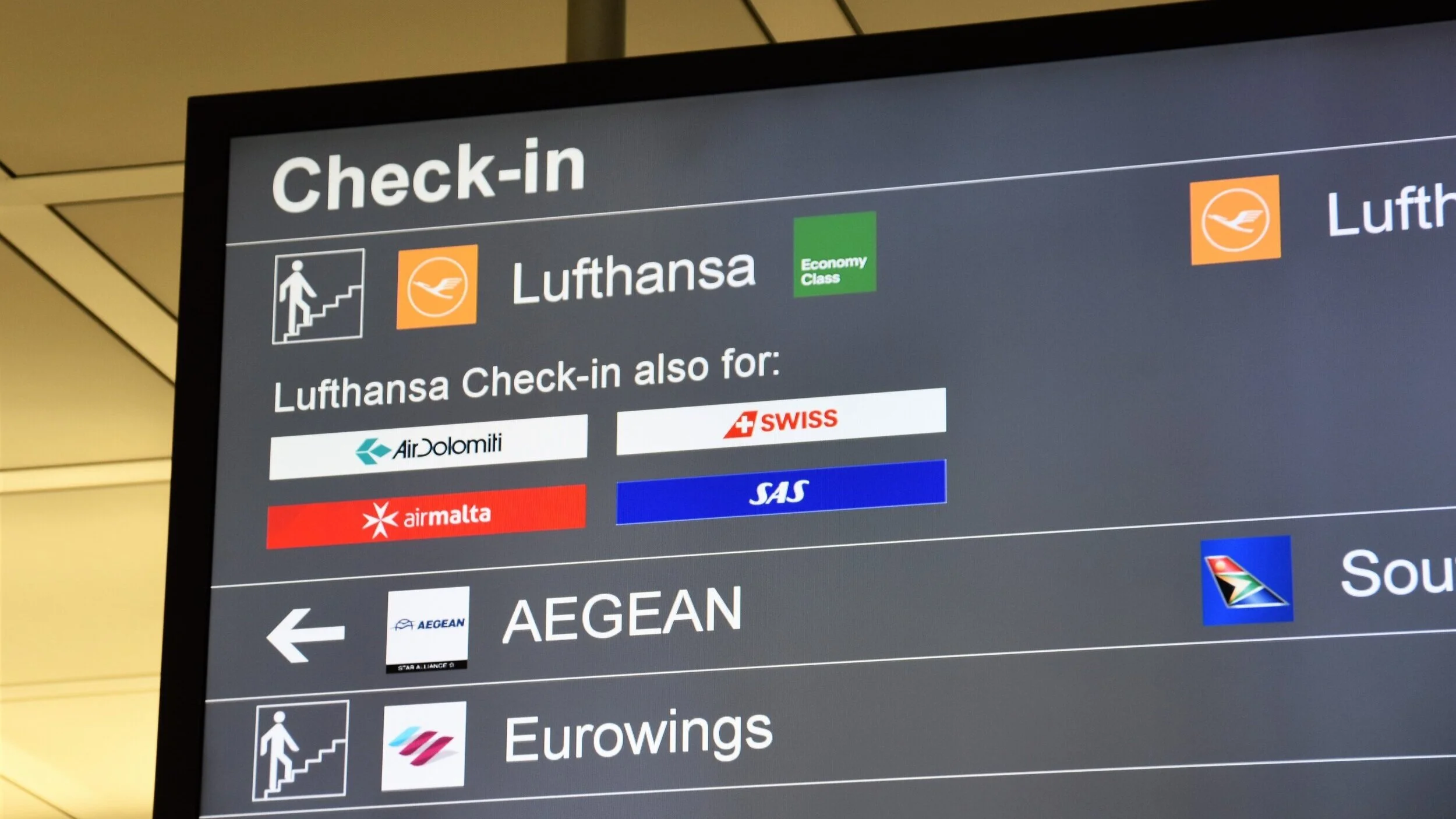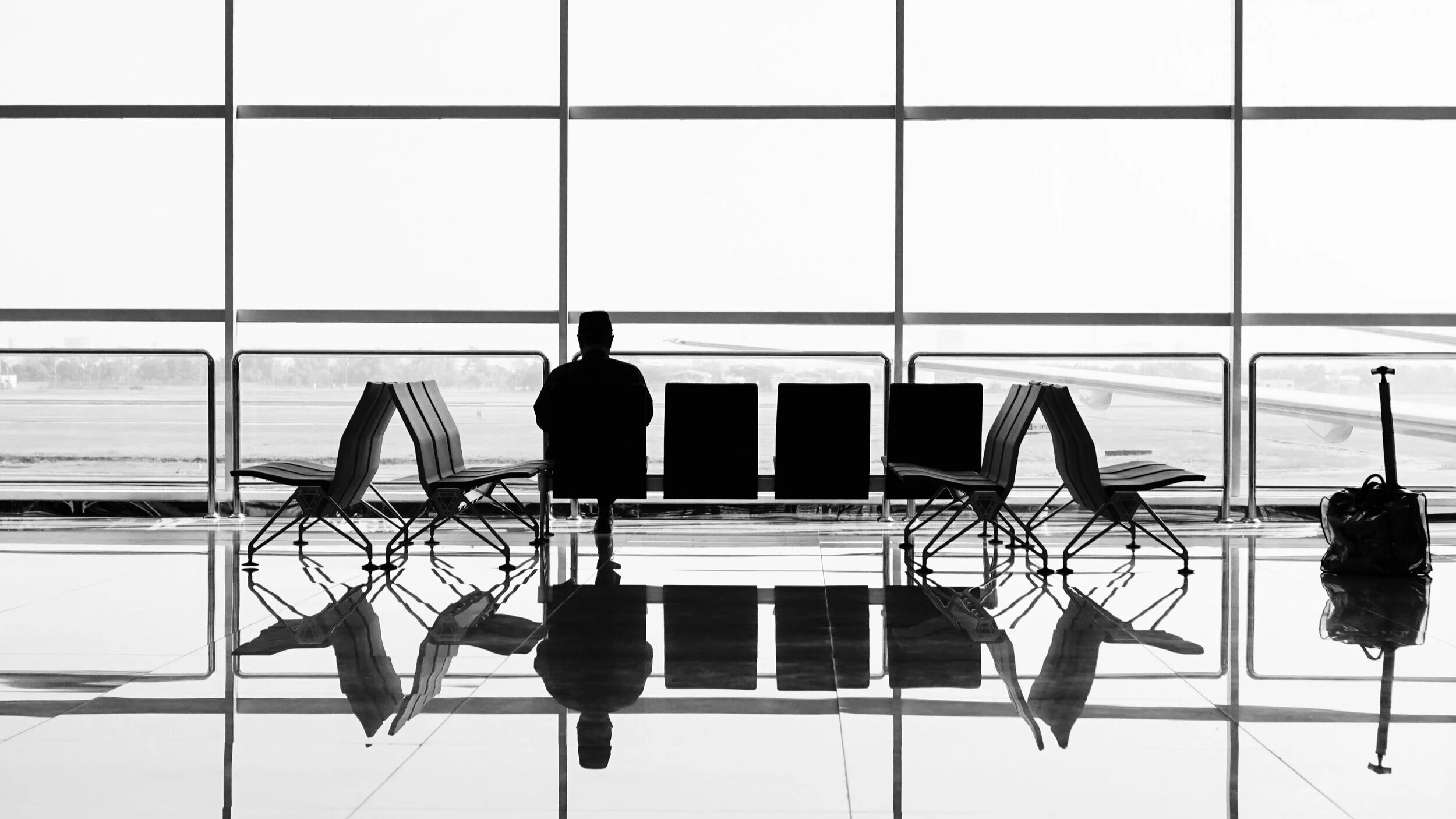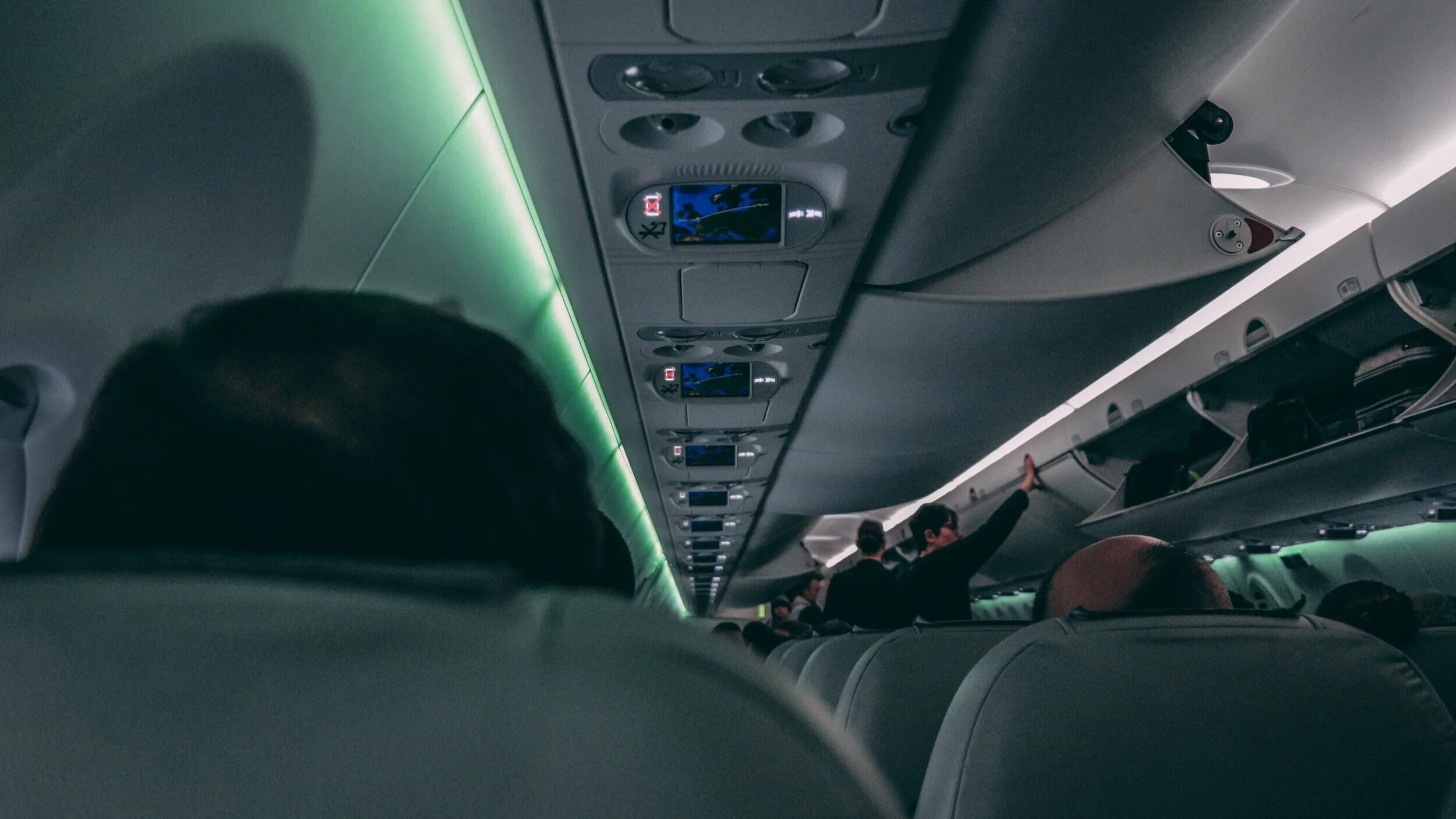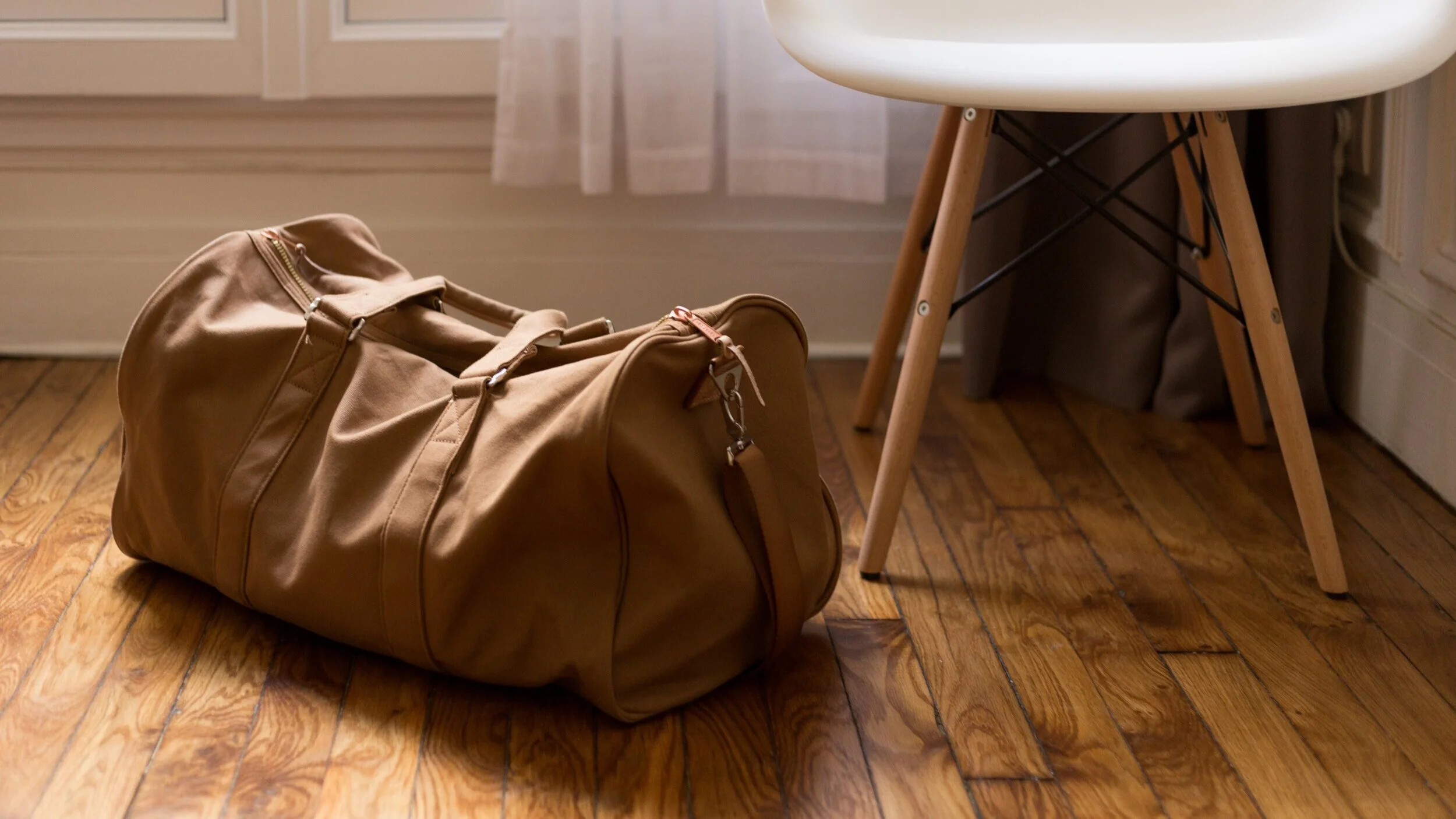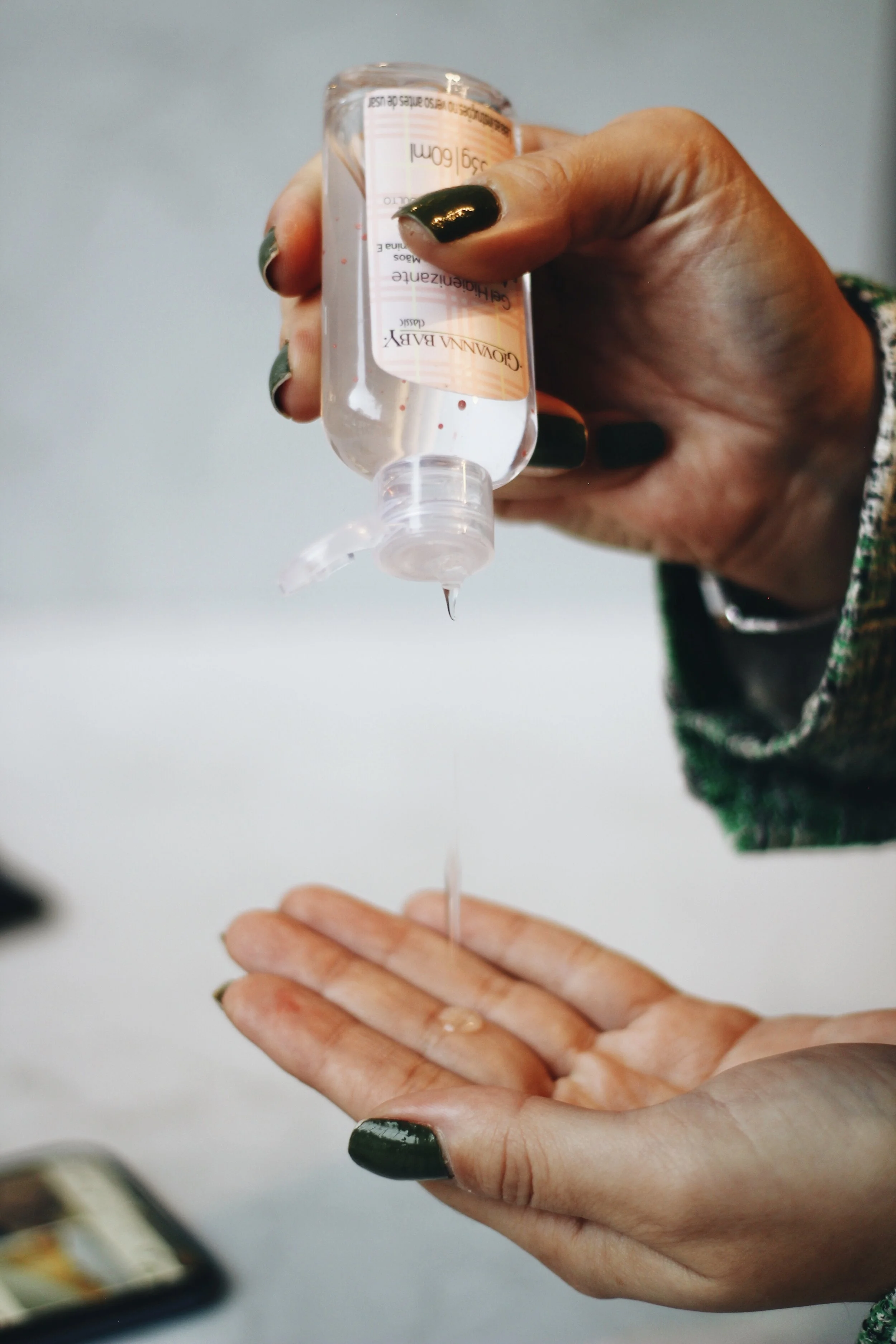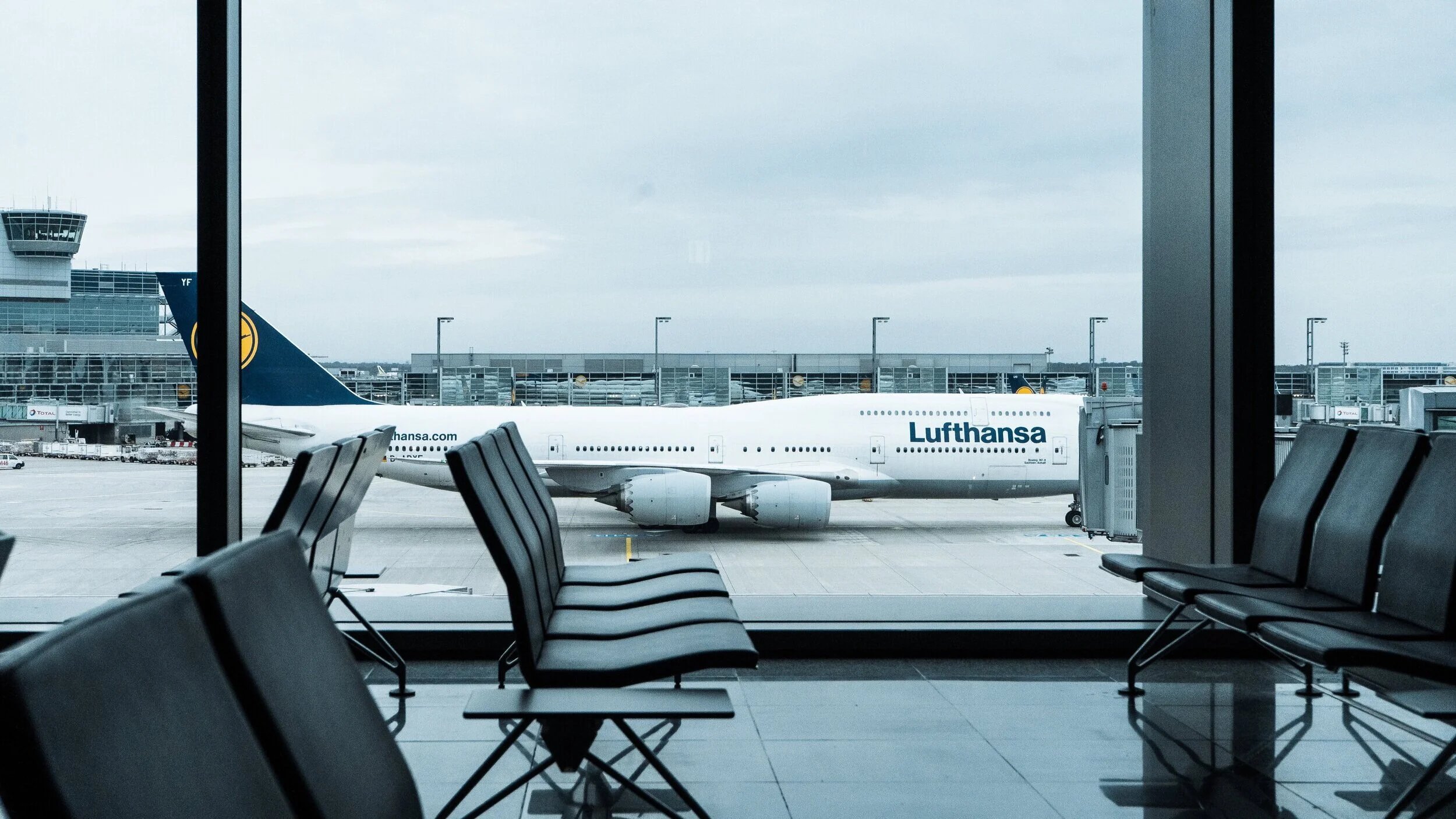Travel Disruptions: How Brexit Affects Your Travel Plans
It has been quite a year for the travel industry. Many of us are desperate to travel overseas having missed out on holidays in 2020. Yet the prospect of travel in 2021 presents us with more uncertainty. Between COVID and Brexit, there are many things we need to consider before booking our first flight.
What Will Travel Look Like In 2021?
Many of us are desperate to travel overseas having missed out on holidays in 2020. Yet the prospect of travel in 2021 presents us with more uncertainty.
To simply plan a holiday requires assessing and making predictions based on the COVID situation. Also, if you are planning on traveling to and from the UK there are new regulations to consider post-Brexit.
To help you make an informed decision on when, where or whether to book, this article provides a simple overview of the 2021 travel situation.
Changes for UK Citizens Post-Brexit
Be aware that the new rules for UK citizens travelling in Europe only apply within the Schengen area.
The Schengen area covers 26 countries without border controls between them. These countries are: Austria, Belgium, the Czech Republic, Denmark, Estonia, Finland, France, Germany, Greece, Hungary, Iceland, Italy, Latvia, Liechtenstein, Lithuania, Luxembourg, Malta, the Netherlands, Norway, Poland, Portugal, Slovakia, Slovenia, Spain, Sweden and Switzerland.
Different rules apply in Bulgaria, Croatia, Cyprus and Romania.
Passports
You don’t need to replace your passport. If your UK passport says ‘European Union’ on the cover you can still use it, it just loses all of its EU powers. The only requirement is that your passport is valid for at least three months beyond your date of departure.
Tougher Border Checks
Before Brexit, border officials only checked to see if your passport was up to date and belonged to you. However, now they may ask for the purpose of your visit, where you plan to travel, how long you plan to stay and if you have sufficient funds.
Health
European Health Insurance Cards can continue to be used until the expiry date on your card, guaranteeing access to free medical treatment to UK citizens in the EU.
The EHIC will soon be replaced by a GHIC (global) card which will cover you for health treatment not just within the EU but also in countries where there are UK agreements in place, such as Australia.
Driving
You don’t need an International Driving Permit (IDP) to drive in the EU , Switzerland, Norway, Iceland or Liechtenstein if you have a photocard driving licence issued in the UK.
The main changes are regarding motor insurance. You will now need to carry a physical, paper copy of a ‘Green Card’ (which provides a multilingual translation of your car insurance) when driving abroad. Contact your insurance provider at least six weeks before your trip to obtain this.
Mobile Phone Charges
Sadly, UK citizens no longer benefit from the EU ban on roaming charges. Although the big phone providers have suggested they will not reintroduce these charges, they are now allowed to do so if they wish.
Some phone companies have said that they will now charge extra to those customers who spend half their time overseas. This means that retired people sending the winter months abroad or those with holiday homes wanting to use their 90 in 180 days allowance will be charged more for their UK mobile phones.
Pets
Pet passports which entitled the owner to easily take their dog or cat into the EU are no longer valid.
Pet owners must now obtain an EU Animal Health Certificate, for which the animal must be micro-chipped. At least 3 weeks before travelling your pet must have a rabies vaccination and dogs must be given a tapeworm treatment between one to five days before entering the EU. These details will be recorded on the health certificate.
How much time can UK residents can spend in the EU?
One of the biggest setbacks of Brexit is that the amount of time you can spend in Europe is now vastly reduced. Without residency or visas, even those who own EU homes will only be allowed to spend 90 days (about three months) in any 180 (six months) in the Schengen area.
Once you have spent a total of 90 days in 180, you are not be allowed to visit any EU country for the following three months. For example, if you spent three months in Spain from December you won’t be allowed to re-enter any country in the EU until June.
However, the 90 day rule does not apply in Bulgaria, Croatia, Cyprus and Romania. You can visit these countries without it counting towards your 90-day total.
Is this the end of living in Europe part-time?
Thankfully, it is still possible to spend longer in your favourite Schengen area country although it will mean applying for a visa.
These are reasonably priced but require you to prove you have medical insurance and sufficient funds to support yourself while you are there.
France has a one-year visa which costs €99. In addition to the above, you’ll also need to provide evidence of your accommodation.
Spain has a long-stay visa priced €60 which requires both health insurance and a medical certificate, proof you haven’t broken the law in the past 5 years and at least £2000 per month for your intended stay.
The situation in Italy is somewhat different. Whereas in France and Spain you can arrange a long-stay visa without applying for residency, in Italy, it is not possible to apply for one without the other. With an Italian long-stay visa, you can enter Italy, but you must get your Italian residence permit, to authorize staying for more than 90 days.
How Brexit affects travelers planning to visit the UK
At the moment, EU citizens can visit the UK with national ID cards. But from 1 October 2021, you must show a valid passport and travel documents covering the dates of your trip. Your passport should be valid for the whole of your stay in the UK. Under the new system, if you’re an EU, EEA or Swiss citizen, you can visit the UK without applying for a visa and in most cases, will be able to stay for up to six months.
Nothing has changed for non-EU/EEA visitors following the end of the Brexit transition period.
How COVID-19 is affecting travel as 2021 begins
The most significant factor shedding doubt on our travel plans is COVID-19.
For the moment, UK citizens are not permitted to leave the country except for work or for those with residency outside the UK to return to their homes.
The majority of the EU is also under lockdown restrictions. The EU uses a traffic light map as a guideline to the high risk countries (signalled in red) from which travel should be limited. At the moment the only green, (safe and unrestricted ) area in Europe is a small section of Greece.
The following section examines how the variables of COVID are shaping up. This should help you to predict if a booking for summer 2021 is likely to come to fruition.
Why we can’t rely on the ‘R’ rate as a predictive measure
The R rate, which gives a measure of how quickly the virus is spreading, is used by many countries to enforce restrictions. Last year, we saw how the R rate affected whether a country remained on ‘safe to travel’ lists. However, now that we have lived through repeated waves of the virus, we know that even if your preferred destination has a low R rate now this doesn’t mean it will remain low in the months ahead.
How will vaccination programmes affect travel in 2021?
The beginning of COVID-19 vaccination programmes have provided us with our first real glimmer of hope. As the Pfizer vaccine seems to also protect people from new strains, we hope that a return to activities like travel might not be too far away.
Here are answers to the important questions on COVID vaccines and travel
What percentage of the population needs to be vaccinated before things improve?
When so many people are vaccinated that the virus struggles to find people to infect, COVID will no longer pose such a threat. This is what is known as achieving ‘herd immunity.’
The number of people needing to be vaccinated to achieve herd immunity depends on how infectious the virus is. As some strains of COVID-19 (such as the UK and South African) are reportedly more contagious, this could mean the ‘critical vaccination level’ will need to be higher.
The higher the critical vaccination level, the longer it will take to achieve.
Will COVID vaccination passports be available for travel?
There is speculation that a document will be available to those vaccinated which will enable them to travel. However, scientists are not yet certain whether the vaccine only prevents COVID symptoms. It is possible that, like the flu vaccines, those vaccinated will still carry the virus. In this case, being vaccinated wouldn’t mean you posed no COVID threat.
Will being vaccinated prevent me from spreading the virus?
It is expected that this information will be available from clinical trials soon. However, this article from a researcher at Cambridge University gives us cause to feel positive.
It explains why the vaccine will help defeat COVID even if it doesn’t stop us from carrying the virus. Briefly, this is because carriers with no symptoms transmit less of the virus. Therefore, ‘vaccinated people are less likely to transmit enough virus to cause severe disease.’ So, even if the vaccine doesn’t prevent us from carrying the virus, it will help prevent those we infect from becoming seriously ill.
How COVID will continue to affect travellers
Although the ongoing vaccination programmes will eventually help defeat the virus, herd immunity won’t be achieved quickly. Unless the vaccine proves to prevent us from carrying the virus, those who have been vaccinated won’t be granted exemption from restrictions or other preventive measures.
COVID travel protection measures, (such as testing before flying and/or a requirement to quarantine) are likely to be present for most of 2021, as will wearing masks and social distancing.
The return to travel and holidays as we knew them is still a long way off.
Tips should you decide to book
Restrictions around international travel in 2021 are likely to be constantly changing. However, if you are eager to book try these tips to improve the chance of an exchange or refund.
The best way to protect yourself from losing money on your 2021 holiday is to book a package through an ATOL protected company which means you will get a full refund within 14 days.
Be aware that your entitlement to a refund depends on whether or not your operator actually cancelled the booking. If they cancelled, you are eligible for a refund. If your plans change and you can no longer travel, most companies don’t have to offer an exchange or reimburse you.
As a result, airlines such as British Airways and Easyjet have started to offer flexible holiday bookings should you need to change your plans. Although you must inform them of changes 3 to 4 weeks before departure, this should make a booking, (if not confidence-inspiring) somewhat less risky.
Contributed to the Sanctifly Travel Wellness blog by Caroline James, journalist and editor of Immigration News UK
What Do Travelers Need To Feel Safe On The Road?
Many surveys suggest that travelers are eager to start exploring again, however only if their safety concerns are met. Plaza Premium Group conducted a survey where they asked over 2000 travelers their thoughts and expectations on travel in 2021 when they expected to travel, and what would be vital to make them feel safe. Here are some of the key points found in the survey.
2020 was the year of grounded flights and canceled trips. It is a brand new year, and we are so excited to get traveling again, and we are not alone. Many surveys suggest that travelers are eager to start exploring again, however only if their safety concerns are met. Feeling safe and staying healthy is going to be the top concern for travelers in 2021 and beyond. We have spent a lot of time writing about what airports are doing to help passengers navigate the new normal as they return to travel. But it is equally important to understand what travelers want and what they consider the most important.
Plaza Premium Group conducted a survey where they asked over 2000 travelers their thoughts and expectations on travel in 2021 when they expected to travel, and what would be vital to make them feel safe. Here are some of the key points found in the survey.
Source: https://issuu.com/plaza-network/docs/what_is_the_new_normal_in_airport_h_370336b93f6aca?sc_src=email_4088035&sc_lid=207579285&sc_uid=rHkDaHb8tY&sc_llid=6966
49% of travelers consider hygiene and safety a priority.
There has been a strong focus on hygiene and safety in the last year across all industries. It is no surprise that travelers need to know that airports and airlines are making it a top priority in order to feel safe. The crowds, enclosed spaces, and multi-touch surfaces associated with air travel need to be addressed, and airports and airlines need to prove to customers that they are doing everything they can to make the spaces safe. Airports and airlines should be introducing measures such as increased cleaning and hygiene protocols, contactless processes, staggered arrival times, and social distancing.
83% consider airport lounges and in transit hotels essential.
This is an interesting one. Presumably, it only applies if airport lounges either have private spaces travelers can book or drastically limit the capacity. Anyone who has spent time in a busy lounge pre-Covid will know they are not the best spaces to stay away from other travelers. However, if lounges limit numbers and apply social distancing measures, they could become sanctuaries for weary travelers. And access to lounges and to private rooms in transit hotels will become a highly sought after benefit that travelers are willing to invest in. Access to these spaces will become a must-have benefit in credit card, airport reward, and travel wellness programs, such as Sanctifly.
83% of travelers consider wearing a mask as the most important preventive measure during travel.
Studies show that masks reduce the spray of droplets when worn over the nose and mouth, therefore preventing your respiratory droplets from reaching others and, when others wear them, preventing their respiratory droplets from reaching you. Masks are most effective when everyone wears them and travelers are recognising this. The problem occurs when everyone is not on the same page. Airports and airlines can help to support travelers by enforcing mask-wearing in the airport and on the flight.
Check out this article for tips on the mask hygiene.
While wearing a mask is considered the most important preventive measure, according to travelers, there are many other measures that should also be implemented by the air travel industry. These include:
Body temperature checks
An elevated temperature is a key indication that you have contradicted Covid-19. While everyone should be monitoring their temperature themselves and stay at home should they notice a change, this is not always feasible. Airports and airport facilities, such as lounges, should implement temperature checks in order to screen passengers.
Availability of hand washing facilities and sanitizer
Wash and sanitize your hands was the calling card of 2020 and it will continue into 2021. The availability of handwashing facilities and hand sanitizer should be widely available across airports and on planes. While it is expected that the airport or airline will provide access to these items, bringing your own can bring great peace of mind. The TSA recently increased the liquid allowance for hand sanitizer in carry-on luggage from 3.4 oz to 12 oz so that travelers can bring larger quantities on their trips. Please note that this increase does not apply to other liquids. Travelers can also pack some disinfectant wipes to wipe down the seat and tray table when boarding the plane. Again, the airline will have hygiene protocols in place for between flights, however, for peace of mind, it can be good to do it yourself.
Social distancing
Maintaining social distance is a huge factor in preventing the spread of Covid-19. We have all now become accustomed to staying 2m apart and following social distancing signs and floor stickers when in public places, and the airport is no different. Make sure you follow the instructions carefully while in high traffic areas such as security control and keep your distance from other passengers as much as you can. Do not sit down next to another passenger while waiting at the gate, even if it is the only seat! Check out this article for some inspiration on how and where to find quiet space at the airport.
Although some airlines are practicing this by blocking the middle seat, be prepared that this is not the case for every flight. Some airlines, in a bid to earn more revenue after a quiet year, are selling every seat they can, and therefore there is no social distancing on planes. If you do not feel comfortable sitting next to a stranger during a flight, make sure to check with your airline prior to departure and enquire about their social distancing policy.
Contactless experiences
The pandemic has expedited the need for more seamless and contactless processes at airports. Whether we are talking about checking in, passport control, accessing gate information, and even ordering food and entering airport facilities such as lounges, so much can be done through an app or online platform. When almost every traveler has a smartphone and access to free Wi-Fi, there is no limit to what we can make contactless. We were starting to see this becoming a trend in recent years, with airports promoting online processes as more convenient and time saving for travelers. The pandemic has shown us that we can rely on technology for a lot of these processes, and we should embrace that in order to stay as safe and healthy as possible while on the road.
A key point that emerges from this survey and many others is that travelers, airports, and airlines need to work together to make these safety measures work. We need to maintain a social distance, but the airports and airlines need to facilitate it. There should be access to hand sanitizer and increased cleaning of surfaces, but we should also bring our own sanitizer and avoid touching unnecessary surfaces.
At Sanctifly, we are committed to helping our members and travelers everywhere stay safe and healthy as we return to travel. With vaccines on the horizon and travelers eager to take to the skies again, it is clear that we will be on the road again soon. However, we all still want to be as safe as possible, and everyone needs to do their part. As well as providing access to wellness facilities all over the world, at Sanctifly, we are constantly sharing useful information about health, wellness, nutrition, exercise, and traveling in the post-Covid world. Make sure to download the Sanctifly app and follow us on social media to get all the information you need to Travel Well in 2021!
Download the app today to explore our content and start building your healthy habits at home with Sanctifly.
For more information on our membership types, click here.
Flying In The New Year? What To Consider On Your Next Trip
The travel experience has changed dramatically due to Covid-19. Sara Quiriconi flew from MIA to LAX at the start of December and shares some thoughts, advice and what to expect if you are traveling in the US over the holidays or in early 2021.
Recently Sanctifly content creator, Sara Quiriconi flew from Miami to Los Angeles and we asked her to describe her experience so we could get a sense of what it’s like to fly in these strange times.
1. What airports were you traveling between?
I flew between Miami (MIA) and Los Angeles (LAX) at the beginning of December 2020.
“TOP TIP - Pack your own snacks and water bottle. Food is limited but water refilling stations are still available”
2. What about the airport was different?
It was so quiet! Eerily quiet. I am so used to travel and dealing with crowded terminals and long lines, this was a weird experience. But it also depends on the time you're flying; I had a friend wait in the same Priority check-in line the day after I flew and was waiting 30 min to check a bag. So, hit or miss, but overall noticeably quiet. Not all shops and restaurants were open; again, depends on the time you fly, but I'd say only approx. 50% of shops and restaurants were open during daytime flight times. I was definitely glad I ate before I left for the airport, do not expect to get a good meal at the airport or on the plane!
3. What about the plane was different? Were there any particular restrictions imposed?
I was on a 777 and it was close to empty flying LAX to MIA; service is limited to drinks, no food on the shorter domestic flights. They give you a baggie with a water bottle, wipe and cookie, that’s it! I always bring some healthy snacks with me on the plane and I was glad of it! Every airport and airline will be different, I flew AA (American Airlines) and masks were mandatory.
4. What advice do you have for anyone flying in the coming months?
There are lots of new things to think about when planning a trip nowadays. Here are some things to consider/pack:
Pack your own snacks & water bottle (most airlines only give 6 oz. on shorter flights, if any)
Plan extra time, more than usual — airport traffic and security is a hit or miss these days, better to have extra time than be late. On that note it is also important to check with the airport to see if there are any restrictions on how early you can arrive at the airport. In order to reduce crowds some airports may be restricting the time that you can arrive, and it is important to factor this into your travel plan.
Bring your own pen. no one will let you borrow one these days if you need it for customs forms, work, etc.
Check out Sara’s experience here.
Without a doubt the flying experience has changed dramatically thanks to the impact of Covid-19 and we need to change along with it. With a little preparation and planning, your next trip can run as smoothly as pre Covid. Here is what you need to consider and what you need to change in your pre travel routine to fly safely in 2021 and beyond.
1. Pack the new essentials
At this point we should all be used to making sure we have a mask or other form of face covering when we leave the house. Masks are incredibly important in reducing the impact of Covid-19 and are now mandatory in many airports and on many airlines. Make sure you pack a face covering for the flight, plus enough to get you through your trip. Remember all reusable face coverings should be washed daily so make sure you either pack enough spares or have a plan for washing your masks throughout your trip.
Hand sanitizer is another item on the new essential list. Although hand sanitizer stations will be available in the airport, having your own can offer comfort. The TSA allows travelers to bring hand sanitizer containers up to 12 oz (354ml) in their carry on. Please not that the usual restriction of 100ml apply to all other liquids.
If you forget your mask or your hand sanitizer there will be options to purchase TSA compliant PPE equipment at the airport. However, it is always better to be prepared so make sure to add them to your packing list.
2. Make sure your phone is charged
Another precaution we are seeing in many airports around the world is the move to contactless processes throughout the airport journey. Whether you are checking in, checking a bag, ordering food or even in some cases, using the elevator, you will need your mobile phone. Your phone will become the ultimate travel companion and the last thing you want it to me running out of charge when trying to show your boarding pass! Make sure you charge your phone fully before leaving the house. You can also pack a portable battery bank (make sure that is charged too) so that you will always have the option to top up your phone.
Another good tip is to take a screen shot or have your boarding pass downloaded onto your phone before you get to the airport. The last thing you want is to be unable to access your travel documents because you lose service.
On the plus side, if you have your phone at the ready to move through the airport, you can also have the Sanctifly app on hand to help you to Travel Well. On the app we have lots of traveler focused fitness videos, airport stretch routines and guided meditations to help you make the most of your travel downtime.
3. Check your destination country’s travel restrictions and regulations for when you go and your own country’s rules for returning
Planning for quarantine is not something any of us expected to have to add to our travel routines, however Covid-19 has made it a reality. Make sure to check the relevant travel restrictions and other health and safety regulations of your destination country. Here is a great interactive map where you can find a list of the travel and health regulations for countries all over the world. Make sure to check just before your trip as changes are being made all the time.
Plan for quarantine when necessary. Do you have to self-isolate when you arrive? Do you have somewhere you can do that and access to the relevant supplies you need? Or will you need to quarantine when you return home? Make sure to stock up on basic supplies before your trip so that you do not need to leave your house when you arrive home from your trip. Set up a grocery delivery with a local service or have a friend drop off some supplies when you return so that you can quarantine effectively.
And don’t forget to check the health and safety regulations imposed by your airline. Are you required to take a test before or after flying? If yes, you need to know when and where you will be taking the test, how long it will take to get results etc. It is difficult to give specifics as every country and state is slightly different however the one universal point is that you need to plan and prepare in advance.
4. Have a contingency plan in case you get sick
Getting sick before you take a trip is easy to deal with, you simply stay at home. However what we may not have considered is, what do we do if we get sick or come into close contact with someone with Covid-19 while we are away from home? Having a contingency plan in place before going on the trip is vital so that we are not putting ourselves or anyone else at risk.
If you are feeling sick, displaying symptoms or have come into contact with someone with Covid, you will need to isolate. This can be difficult to accept if you are far from home, but if you have a plan in place, it makes the process a lot less daunting. Make sure you have the resources available to stay in your destination country should you need to. Take some time to learn about the support services available in the city you are staying in and make sure to take the time to reach out to loved ones and friends so that you do not feel lonely.
As many of us start to fly again or at least start to plan trips for 2021, it is important to remember that things will not be the same. Our usual travel routines will need some tweaking in order to adjust to the new normal. Keep these things in mind when planning your next trip so that you can easily change and update your travel routine.
Download the app today to explore our content and start building your healthy habits at home with Sanctifly.
Sign up to the Sanctifly Travel Wellness Newsletter for monthly tips and information on the travel industry and how you can stay safe and healthy in the post Covid-19 world.
For more information on our membership types, click here.
Finding Sanctuary: How to find quiet space at any airport
Travel has always been stressful. Now more than ever, we are incentivized to get some space, away from others. So, what’s the travel ‘hack’ to finding those quiet zones at the airport without endless walking? Learn all about how we find peace and sanctuary during airport downtime.
Travel has always been stressful. Now more than ever, we are incentivized to get in to space, away from others. So, what’s the travel ‘hack’ to finding those quiet zones at the airport without endless walking? The idea of peace and quiet can sometimes seem completely unreachable when you are sitting in the middle of a busy terminal waiting for your next flight. Your health and wellbeing should never be compromised while traveling. At Sanctifly we are big fans of finding quiet spaces to spend our airport downtime and we asked our team of travel writers and collaborators to share their top tips for ‘Finding Sanctuary’ at the airport. Here are some of the best tips they had to offer. If you have any further ideas, please share them with us at maeve@sanctifly.club.
1. Chapel / Meditation Room
Most airports will have a Chapel or Multi-Faith Prayer Room available to travelers. They are not just for religious purposes, they are open and inviting spaces where travelers are invited to relax, reflect, and meditate. These are often under-used areas of the airport and offer passengers a great opportunity for peace and quiet. Even if the space is busy, visitors are often encouraged to be quiet and not to disturb other travelers during their time in the chapel/prayer room. Just be aware that some of these rooms do function as a religious space and so may hold services from time to time.
Some airports even have a dedicated meditation space, designed specifically for passengers to relax and meditate during their airport downtime. Here are five of the best airport meditation rooms that we have found:
1. Heathrow
LHR has a dedicated ‘Rest and Relaxation Room’ located near Gate 24 in Terminal 2. The space offers comfortable seating and a calm and inviting atmosphere where visitors are encouraged to be quiet and peaceful during their airport downtime.
2. Philadelphia
The Quiet Room at PHL is a beautiful, calming space designed for passengers to enjoy solitude and prayer. The space is divided into 2 sections, separated by frosted glass so visitors can enjoy some privacy while meditating. The Quiet Room is located in the hallway that connects Gate D and Gate E.
3. Helsinki
The Aukio Meditation Space is a unique space at Helsinki Vantaa Airport. The curved 360° LED screen, soundscape and interactive wall projections take visitors on a journey through Finland’s nature and its four seasons.
Aukio is located in the Non-Schengen area, near Gate 40.
4. Frankfurt
The Quiet Room at Frankfurt Airport is a dedicated mediation space where passengers can sit and relax before their flight. The flowing design and the calming lighting create the perfect atmosphere for stress relief and meditation. The Quiet Room at FRA is located on Concourse Z, in Terminal 1, near Gate Z11.
The Sanctifly app features all chapels, multi-faith prayer rooms and meditation spaces at major airports all over the world. Go to the home screen on the Sanctifly app and click the ‘Sanctuary’ tile to find out more about your options for space, quiet and meditation at the airport.
Prayer rooms can sometimes be located outside of airport security, so keep that in mind as you plan your airport downtime.
2. Yoga space
Another great option for finding some quiet space and sanctuary at the airport is in a dedicated yoga space. This is not an option at too many airports, however as health and wellness become a more important priority for travelers, airports are taking note and introducing more fitness and wellness facilities into the terminals. Check out this article on the best free yoga rooms at airports for more info on where to find some space to stretch and meditate.
3. Empty Gates
One of the best resources for finding some extra space away from the crowds at the airport is to go to an empty gate and take advantage of the space. Most terminals will have unused gates, usually located away from the restaurant and shopping areas of the terminal. You can quickly scan the flight information screens and make a note of any gates that are not currently in use. Make sure to take note of a couple of options as you may get to the gate and realize it is about to become in use. Another important tip to remember is not to venture too far from your gate. When we are in a relaxing and peaceful space, it can become all too easy to lose track of time. Make sure you know how long it will take you to get back to your gate and leave with plenty of time, so you don’t find yourself running through the airport, late to catch your flight.
The best advantage of spending your airport downtime at an empty gate is that you get some space to move around and stretch without worrying about disturbing your fellow passengers. At Sanctifly we have created a series of travel friendly workouts and stretch routines that are designed specifically for travelers. You can find them under the ‘Fitness’ tile on the Sanctifly home screen.
4. Dedicated workspaces
Dedicated workspaces can also be a potential option for quiet space at the airport. These are areas of the airport terminal with dedicated desks and charging points, designed to facilitate travelers that need to get some work done during their airport downtime. However, depending on where the workspace is situated (and who is using it at the time), it may not be the quietest option. If the workspace is away from the main part of the terminal (i.e. the food court and shopping area) and nobody using the space is on a conference call, workspaces can be quiet and peaceful.
Some airports take this concept even further with the introduction of work pods. Jabbrrbox provides individual work booths that are quiet and comfortable and equipped with Wi-Fi, video conferencing capabilities and mobile booking to access. There are Jabbrrbox Booths available to book at LGA, JFK, PIT and CVG and can be booked in 30 minutes increments. These offer a great opportunity for some quiet time at the airport.
5. Lounges
Lounges are another potential option for quiet space at the airport. Whether or not the lounge is quiet and peaceful will depend on how many people are using the space. Ask at reception how many people are using the space before entering the lounge and you can judge whether or not you want to enter.
Some lounges will have additional facilities where you can get some space. For example, many lounges offer shower facilities, private resting rooms, and dedicating workspaces that you can take advantage of.
Sanctifly has over 260 lounge partners. Premium members can use passes to access lounges at airports all over the world. You can find all our lounge partners under the ‘Lounge’ tile on the home screen.
“The airline lounges are my favorite airport sanctuary. These lounges are especially valuable during disrupted trips. They so often reduced my stress by having pleasant and professional staff at hand to help repair my damaged itineraries.” –Scott Gillespie, tClara
Those are some options available to passengers in the transit area of the airport. There are also options for quiet space before security if that suits your travel schedule.
6. Go to the lobby
The best option for quiet space available before security in nearly every international airport is an airport hotel lobby. In most airports a hotel will either be connected to the terminal or offer a free shuttle bus to and from the airport. As with many of the space options that are not specifically designed to facilitate quiet time, this option will depend on how busy the hotel lobby is. Airport hotels tend to market towards business travelers rather than families and so there is a good chance that the clientele in the lobby are in the same mindset as you and are looking for a quiet space to work or relax during a hectic business trip. This makes airport lobby’s a great option for finding quiet space at the airport.
7. Get a room
For travelers that are willing to pay a little extra, Day Room options at Hotels have become increasingly more available and affordable. Transit hotels and airport capsule hotels offer the best chance for rest, relaxation and quiet. The hotels will offer pay-by-the-hour rates, so no matter how much time you have before your flight, you can still book a room. Even if you are not tired and don’t want to sleep, having your own space to relax or read or meditate, away from the busyness of the terminal is definitely worth it! We feature a couple of recommended Day Room options at each airport in the Sanctifly App.
8. Get out
If you do have a layover, delay or downtime of longer than 3 hours, don’t spend it in the airport terminal. Visit a nearby park to get some space and sanctuary. Spending time in nature, away from the noise and busyness of the airport is incredibly beneficial for your mental health and will help to relieve travel stress. At Sanctifly we want to help frequent travelers to make the healthiest choices for your travel downtime. We have curated and selected the best parks that are within 5 miles of every major international airport, including details on how to get there. You can find details on these parks under the ‘Run/Walk’ tile on the Sanctifly app home screen.
Building a meditation practice is not just for traveling, introducing meditation into your everyday routine can be extremely beneficial. It will also make meditation while on the road much easier! Check out this handy, detailed guide to creating a meditation space at home. You wont regret it!
Download the app today to explore our content and start building your healthy habits at home with Sanctifly.
For more information on our membership types, click here.
First Flight, New World: What To Expect At Hotels
Just as with the airport journey, travelers can expect to see some significant changes during their hotel stays. The top priority for hotels as they open up again is providing a sense of security for their guests. Travelers need to have confidence that the hotels they are staying in are safe and clean and implementing strict protocols around cleanliness and social contact.
Just as with the airport journey, travelers can expect to see some significant changes during their hotel stays. The top priority for hotels as they open up again is providing a sense of security for their guests. Travelers need to have confidence that the hotels they are staying in are safe and clean and implementing strict protocols around cleanliness and social contact.
The American Hotel and Lodging Association (AHLA) launched their Safe Stay™ initiative which is ‘focused on enhanced hotel cleaning practices, social interactions, and workplace protocols, while ensuring transparency throughout the guest journey’. The initiative lays out guidelines and general advice for how different elements of the guest journey need to change and what hotels can do to help guests feel safe during their stay. We’ve summarized the key points laid out in the AHLA guidelines along with what some other major hotel brands are doing to help keep guests safe. Here is everything you need to know for your next hotel stay.
Cleanliness, sanitation and hygiene will be a top priority
All areas of the hotel will see increased cleaning schedules, with high traffic areas such as the lobby, front desk and elevators will be cleaned and disinfected more frequently. Sanitation stations will be set up throughout the hotel so guests can frequently sanitize their hands.
Guest rooms will be thoroughly sanitized with special attention paid to multi-touch, hard non-porous items including television remote controls, toilet seats and handles, door and furniture handles and light switches. Hilton announced the implementation of the CleanStay program which includes the introduction of the CleanStay Room Seal. A seal will be placed across the guest room doors once it has been clear. The seal shows guests that no one else has been inside the room since it was last cleaned, adding an extra level of security for guests.
Wherever possible multi touch items will be removed from the guest rooms
Items such as pens, paper, local guides, books and anything else that can be removed from guest rooms will be. Although these items may be relatively easy to sanitize it is likely that hotels will remove what they can to reduce the risk. Some of these items may still be available on request depending on the hotel.
We will also see a significant impact on hotel toiletries. Many hotel chains have been removing single use plastics for environmental reasons. We will see a continuation in this trend as guests return to hotels. Wall mounted dispensers are much easier to sanitizer and require less interaction from the housekeeping staff than small individual bottles.
Digital (no contact) process will be introduced.
Much like the airport, hotels will be working to minimize direct contact between hotel staff and guests. Guests will be encouraged to check in and out of the hotel digitally. It is likely that he hotel you are staying at will send you download details for their app prior to your arrival so you can be prepared. Other processes such as ordering food, contacting reception and, in some cases, accessing your room will be done digitally.
Food options and services will be different or limited
Food options at hotels will be different too. It is unlikely that hotels will serve food in a buffet style anymore and will instead encourage guests to order individual meals. Restaurants will be implementing social distancing and so seating capacity will be limited. Guests will be encouraged to pre book their meal and we may even see time limits on booking. Room service will be greatly encouraged as it helps to limit contact between guests. No contact delivery of room service will be implemented (meaning the food will be left outside your room and you will need to bring it in yourself).
Leisure centers will be open
We have been speaking to a number of our hotel partners all over the world and the general consensus is that hotel gyms will be available. Gyms will receive extra cleaning and the number of guests permitted to use the hotel at any time may be restricted.
Spas will open and accept guests again however the experience will be a little different. Staff will be wearing PPE equipment and treatments may be limited.
Back of house protocols
While the front of house changes are important for guests, what hotel staff are doing behind the scenes is equally as important. The guidelines recommend that staff should receive Covid-19 safety and facility sanitation protocols training, follow strict hand washing protocols and wear PPE equipment when necessary. Back of house areas will receive the same level of cleaning as the front of house areas and staff members will be encouraged to practice social distancing wherever possible.
Some hotel services may disappear
As mentioned above hotel staples such as the buffet and in room toiletries are unlikely to be part of the new hotel guest journey. In an effort to reduce potential contact between guests and staff we may see some other hotel services disappear too. These may include doormen, hotel porters that bring your luggage to your room, luggage storage and more. There has been specific information about reduced auxiliary services from the large hotel chains that indicates these services will be reduced or disappear. However all the hotel initiatives and the AHLA guidelines do state that contact between guests and hotel staff should be reduced wherever possible, which could mean these types of services become unavailable.
Hotels are doing everything they can to ensure the safety of guests and staff alike while still trying to provide guests with an enjoyable experience. Staying in a hotel post Covid-19 will be different, there is no doubt about that, but it is encouraging to see major hotel brands make the effort to build out these plans and put protocols in place to help keep their guests safe. Building up trust and reliability among travelers will be key to the successful reopening of hotels all over the world. To help you feel more at ease before checking into a hotel read up on what they are doing to help prevent the spread of Covid-19 and keep their guests safe.
The Sanctifly app features lots of great travel tips such as these to help you stay healthy while on the road. Download the app today and browse hundreds of travel wellness tips, articles and airport guides to help upgrade your airport experience and start healthy on your next trip.
Sign up to the Sanctifly Travel Wellness Newsletter for monthly tips and information on the travel industry and how you can stay safe and healthy in the post Covid-19 world.
First Flight, New World: Hygiene Tips for Your Hotel Room
Hotels have been left empty over the past few months and are looking forward to welcoming back guests. While hotels will be doing a lot to ensure that their properties are safe and hygienic for guests, there are a few things you can do to make sure your hotel room is as safe as possible.
Hotels have been left empty over the past few months and are looking forward to welcoming back guests. While hotels will be doing a lot to ensure that their properties are safe and hygienic for guests, there are a few things you can do to make sure your hotel room is as safe as possible.
Put your luggage in the closet: The key to reducing the risk of cross-contamination is to keep things as separate as possible. Store your luggage in a closed closet rather than leaving it out in the room can help keep it away from you. But, before you put it away, make sure to wipe down the plastic handles and zips with a disinfectant wipe.
Wipe down multi-touch surfaces: The cleaning staff at the hotel will be adequately trained in thoroughly cleaning and disinfecting your room and there will likely be increased cleaning schedules as hotel reopen. Therefore there is no real need to wipe down multi-touch surfaces in your hotel room, but for peace of mind, it can be useful to do it ourselves. Spend some time wiping down door handles, light switches, the TV remote, bedside table and the taps in the bathroom.
Open the window (if you can) to get some fresh air circulating in the room.
Mask Hygiene while on the road
Face masks are not only becoming the norm in the airport; they are becoming more and more common anywhere people come into contact. A face mask will become the new necessary everyday item, especially while traveling, we will have to consider how to keep them efficient and hygienic. There are two types of masks you can use, a disposable mask that has a one time use or a reusable one that should be washed once a day in hot water and detergent. It is advisable to use a disposable mask while traveling as it is unlikely you will have easy access to laundry facilities while on the road. If you do opt for reusable masks the WHO recommends that you store your mask in a sealed plastic bag after use so make sure you pack some bags in your luggage. When disposing of a disposable mask, the WHO recommends that you throw it out in a close bin. Make sure to check what type of bin has been provided in your hotel room and request a closed bin or disposable solution for your masks if necessary.
How to make your hotel room feel like a home so you can relax
Once you have completed all the necessary hygiene tasks to make your hotel room feel as safe and comfortable as possible, it is now time to work on making yourself feel as comfortable as possible. Being away from home in unfamiliar surroundings can negatively affect our mood and our sleep. We asked Sara Quiriconi, frequent traveler and travel wellness expert to share her top tips for making your hotel room feel like a home. Check out her video guide here.
Top Tips For Making Your Hotel Room Feel Like A Home
Bring a travel-sized container of all your toiletries so that you can do the same routine you do at home on the road. This not only provides a level of comfort and routine to your hotel experience; it will also help relieve any stress you have about using hotel products. If you bring your own toiletries, you know who has come into contact with them.
Create a 5-minute pre-sleep ritual. For example, you could do a short meditation, a few stretches, or reading for 15 minutes (avoid screens as much as possible). The goal is to subconsciously signal to your body and mind that it is time to sleep while drawing the focus away from your surroundings. These simple, repeatable actions are grounding and can help to relieve stress and calm racing thoughts for better sleep. The key is to build the routine at home and then take it on the road.
Pack tools to help block out your surroundings and get a good night’s sleep. Noisy neighbors and too much light is the perfect recipe for a miserable night’s sleep. Pack earplugs and an eye mask to ensure nothing disturbs you and it feels as close to falling asleep at home as possible.
Treat your hotel room like your home. Make your bed, throw away your trash and hang up your clothes. Even though there is a service that will clean your room for you, by keeping a clean and tidy space just like you would at home, you will feel more comfortable.
Pack your favourite snacks. The most un-homely thing about a hotel room is that it is essentially just a bedroom and you have to leave if you want to eat. During a vacation, this is no problem; you want to be out and about all day and just return to your room to sleep. However, when on a business trip, your hotel room becomes your sanctuary and the only place you can relax. By packing your favourite snacks and having them on hand, you can make your hotel room feel more like home.
The Sanctifly app features lots of great travel tips such as these to help you stay healthy while on the road. Download the app today and browse hundreds of travel wellness tips, articles and airport guides to help upgrade your airport experience and start healthy on your next trip.
Sign up to the Sanctifly Travel Wellness Newsletter for monthly tips and information on the travel industry and how you can stay safe and healthy in the post Covid-19 world.
First Flight, New World: Hygiene Tips for Your Journey
Stay safe while on the road with this hygiene tips. Airports and airlines and other travel related businesses will be doing their part to ensure everything is hygienic and sanitary for travelers. But it is also important that we as traveler do our part to keep ourselves safe.
Airports and airlines and other travel related businesses will be doing their part to ensure everything is hygienic and sanitary for travelers. But it is also important that we as traveler do our part to keep ourselves safe. Here are some hygiene tips you can follow at the airport and on the plane to ensure you keep yourself as safe as possible while on the road.
Face Masks
It is advised that face coverings should be worn at all times during the airport journey. Many airports have introduced vending machines that sell face masks and hand sanitizer in the airport terminal.
Tips for mask hygiene
Wash your hand thoroughly before touching the mask.
Ensure the mask is covering your nose, mouth and chin. If using a disposable surgical mask, place the metal piece or stiff edge over your nose and mould it to you face to ensure there are no gaps.
Whenever possible do not touch the mask or pull the mask down away from your nose and mouth. When going through passport control you may b asked to remove your mask to show your face. Make sure to sanitize your hands before and after touching your mask and only remove your mask when you are instructed to so do.
If using a disposable make dispose of the mask immediately after use, preferable in a closed bin and wash your hands thoroughly.
If using a reusable mask store it in a sealed bag immediately after use. Wash the mask using hot water and detergent at least once a day.
Source: https://www.who.int/emergencies/diseases/novel-coronavirus-2019/advice-for-public/when-and-how-to-use-masks
At the airport
Wearing a mask and sanitizing your hands often are great ways to protect yourself while on the road. Here are some more tips to help reduce the risk of you getting sick at the airport.
Avoid crowded areas.
Food courts, shopping areas and busy gates should be avoided whenever possible. Find an empty gate to relax in, away from the crowds.
Avoid high touch traffic surfaces.
For example, railings on stairs, escalators or travellators, vending machines and sockets with switches. Pack a power bank so that you can keep your devices charged while avoiding touching sockets.
Get out of the airport whenever you can.
Being out in the fresh air is much better than being inside the airport. If you are airside and cannot leave, check to see if the airport has an outdoor area, perhaps an observation deck or a patio attached to a restaurant and spend your airport downtime there. If you have a long layover then it’s worth leaving the airport and heading to a local park or walking path. You can find information and directions to local parks at most major international airports in the Sanctifly app.
Follow the health precautions recommended by the World Health Organisation
Wash or sanitize your hands whenever possible, avoid touching your face and cough or sneeze into your elbow or a tissue and dispose of it immediately.
And always remember to sanitize throughout your journey. Airports are full of high traffic and multi contact experiences. From the moment you enter the airport right through to when you reach your destination you will come into contact with a lot of people.
Keep note of these high risk points and remember to sanitize or wash your hands immediately afterwards.
After you use any self-service machine i.e. self-check in, vending machines, water fountains
Directly after you go through security, those trays pass through a lot of hands!
Before and after you eat
After you pick up your bag
As soon as you get on the plane
On the plane
Once you get on the plane there is even more you can do to stay safe and well. Here are some health and hygiene tips for the plane to help you avoid getting sick.
Pack disinfectant wipes in your carry on and wipe down the seat, seat belt, tray table and arm rest before you sit down. If you are by the window don’t forget to wipe down the wall beside you too.
Choose a window seat whenever you can. A window seat puts you in proximity to less people and reduces your risk of being close to a sick person.
Do not take complimentary pillows or blankets. While airlines will have procedures in place to thoroughly clean any items distributed to traveling passengers it is best practice to avoid using anything that is not your own.
Use card payments or exact change whenever possible. Cash is a high traffic touch item and runs the risk of transmitting germs from one end of the plane to the other.
Avoid using the bathroom if you can. Bathrooms are small, enclosed, high traffic areas within the plane and so become high risk areas for viruses to spread. If you do need to use the bathroom, ensure you wash your hands thoroughly before returning to your seat.
Turn on your overhead air vent on. Although the air in the cabin is generally safe, turning your air vent on can help disperse any pathogens in the air around you and ensure you are breathing the freshest possible air.
Follow the health precautions recommended by the World Health Organisation, i.e. wash or sanitize your hands whenever possible, avoid touching you face and cough or sneeze into your elbow or a tissue and dispose of it immediately.
Sanctifly is a global travel wellness solution helping frequent travelers to break bad travel habits and travel healthier through the better use of their downtime.
Download the app today to explore healthy airport guides, travel wellness content and more. Everything you need to Travel Well in one app.
Sign up to the Sanctifly Travel Wellness Newsletter for monthly tips and information on the travel industry and how you can stay safe and healthy in the post Covid-19 world.
First Flight, New World: Airport Lounges
Airport lounges are slowly starting to open up and as they do, we can expect to see some significant changes in how they operate. We asked a number of our lounge partners to tell us what precautions they are taking to ensure the safety of their guests and what travelers can expect when they visit and airport lounge in a post Covid-19 world.
Airport Lounges: What to expect when you visit and airport lounge post Covid-19.
Airport lounges are slowly starting to open up and as they do, we can expect to see some significant changes in how they operate. We asked a number of our lounge partners to tell us what precautions they are taking to ensure the safety of their guests and what travelers can expect when they visit and airport lounge in a post Covid-19 world.
“At the core of our changes, we have enhanced our high standards of cleanliness even further, with more frequent cleaning throughout the day.” Namrata Tidy, Head of Digital, No 1 lounge
What to expect
The team at Dragonpass, who manage a network of 1300 lounges worldwide, have been proactive in reaching out to their network to understand what lounges are doing to protect their guests. They shared the most common changes and precautions that lounges are taking to ensure the health and wellbeing of travelers. Here is what you can expect when entering airport lounges as we return to travel:
1. Reduced capacity & limited seating
The number of lounge guests that are allowed into a lounge at any given time will be restricted and seating will be limited to comply with social distancing. This could potentially affect how long you are permitted to stay in the lounge too. In general lounge guests are allowed to remain in lounges for 3 – 4 hours. Because of restrictions on capacity lounges may reduce this and only allow guests access 1 – 2 hours before their flight.
2. Staff and guests will be expected to wear face coverings and other PPE
The majority of lounge staff will wear face masks and gloves. Guests entering the lounge will likely be expected to wear face coverings too as an added form of protection. The majority of lounges will require guests to wear face coverings so make sure you pack a mask. Many airports are introducing vending machines where you can purchase PPE such as face coverings if you do not bring them from home.
3. Frequent cleaning
Increased cleaning schedules have been introduced to ensure lounges are sanitary and regularly disinfected. High traffic and multi-touch services such as chairs, coffee machines and bathrooms will receive frequent cleaning throughout the day. Hand sanitizer will be available throughout the lounge and especially at high traffic points so that guests can clean their hands during their stay.
4. Reduced menu & other services
To reduce the number of staff needed in the lounge, the range and variety of services may be reduced. This could potentially mean a reduced menu and a restriction on spa and massage services.
No1 Lounge have announced that all buffet areas have been removed from their lounges and instead table service will be provided. Plaza Premium lounges have also introduced a self-ordering mobile app at select locations where a full a la carte menu.
Digitizing as many processes as possible in order to reduce contact with staff members is a trend that we are seeing across all airport businesses. Make sure you research what apps your preferred airport businesses have introduced and download them at home, before you go to the airport, where you know you have secure and reliable Wi-Fi.
5. Magazines and newspapers will be removed
Lounge guests will be expected to bring their own reading material to the lounge. Complimentary newspapers, magazines and any other type of reading material will be removed from the lounge to minimize cross-contamination.
Plaza Premium lounges have also appointed well being ambassadors whose job it is to encourage everyone to practice social distancing while in the lounge, offer assistance at the self-service food stations and, at selected locations, check your temperature. Staff in lounges all over the world will be trained in hygiene and social distance procedures and will be expected to instruct lounge guests on how to follow these protocols.
Temperature checks will be required for lounge staff and may be available is certain lounges for guests. However it is unlikely that guests will have to undergo a mandatory temperature check before entering a lounge.
Every airport and lounge experience will be slightly different. There is no universal requirement regarding wearing face masks, social distancing or anything else. This level of uncertainty adds another layer of stress to travel. The best thing you can do to alleviate that stress as much as possible is to prepare in advance. If you are going on a trip and wish to visit an airport lounge during your airport downtime, research the lounge before you leave for the airport. Double-check that the lounge is open, read their procedures on capacity and access (do you need to pre-book a place in the lounge?), read their guidelines on PPE and check if you need to download any apps to access the services. Knowing what to expect and being prepared is one of the best ways to reduce stress and make the airport experience a more enjoyable one.
Are lounges the best places to spend your airport downtime?
It is clear that airport lounges are doing everything possible to ensure the safety of their guests but are airport lounges the best place to spend your airport downtime? The key to staying as safe as possible while at the airport is to avoid crowds as much as possible and due to capacity restrictions airport lounges are a great option. Increased hygiene protocols and cleaning schedules mean that airport lounges will be one of the most sanitary places in the airport even if lots of people pass through them.
What should you do to prepare to go to an airport lounge?
Research opening hours and access restrictions before going to the lounge
Book in advance whenever you can to ensure you can get access to the lounge
Bring hand sanitizer and a face mask when visiting a lounge
If you are feeling unwell do not travel
Use Sanctifly as your Travel Wellness Guide. The Sanctifly app not only features all the healthy things to do at the airport, you can book access to 260+ airport lounges all over the world.
Sanctifly is a global travel wellness solution helping frequent travelers to break bad travel habits and travel healthier through the better use of their downtime.
Download the app today to explore healthy airport guides, travel wellness content and more. Everything you need to Travel Well in one app.
Sign up to the Sanctifly Travel Wellness Newsletter for monthly tips and information on the travel industry and how you can stay safe and healthy in the post Covid-19 world.
First Flight, New World: The New Airport Journey
As airports start to welcome travelers again and airlines reopen routes all over the world, frequent travelers are wondering what will have changed in the airport journey. With health and wellness becoming a top priority for travelers, airports and everyone else in the travel industry, there is no doubt that we will see some significant changes in the airport journey. Here is what you can expect on your next trip.
The New Airport Journey: What to expect when you head to the airport for your first flight.
This is the second in our Post Covid-19 Travel Tips series where we outline everything you need to know and how to prepare for travel in the new world.
As airports start to welcome travelers again and airlines reopen routes all over the world, frequent travelers are wondering what will have changed in the airport journey. With health and wellness becoming a top priority for travelers, airports and everyone else in the travel industry, there is no doubt that we will see some significant changes in the airport journey. Here is what you can expect on your next trip.
HOW WILL THE CHECK IN PROCESS BE DIFFERENT?
In the post-COVID-19 world, airports will want to reduce the amount of contact between traveler and airport staff. Online check-in will be encouraged for all passengers, and for those that want to check-in at the airport, self-service kiosks will be made available.
Airports will also want to reduce the amount of time travelers spend in the airport terminal. This could mean travelers will only be permitted to go through security at specific fixed time slots. It's essential to read all notifications sent to you and airport displays to avoid any stress or friction at this potential bottleneck.
The security checkpoint is one of the highest traffic areas in the whole airport. While airport staff will ensure that the area and the trays are as hygienic as possible, you will inevitably come into contact with a multi-touch item during this process. Make sure to use the sanitizer right before and directly after you go through security.
HOW WILL THE TERMINAL BE DIFFERENT?
Airport terminals are often busy and noisy places with lots to do, lots to see and lots of people. Covid-19 has had a severe impact on the travel industry, with many terminals turning into ghost towns over the last few months. As travel slowly starts again and more travelers are taking to the skies, airport terminals are beginning to see an injection of life once again. However, there is no doubt that the airport terminal will be dramatically different thanks to the impact of Covid-19. Here are some differences you can expect during your next airport experience.
Expect to see plexiglass screens anywhere you may interact with an airport staff member.
Social distancing signage and floor markings will be in place throughout the airport and travelers will be expected to use them.
Seating will be limited. Due to social distancing restrictions, many seating options will be removed or closed off.
Close contact airport services, for example, airport spas will be closed when we first return to travel.
Restaurant seating options will be limited due to social distancing restrictions and wherever possible restaurants will require you to order via an app or other digital means.
Using cash to pay for airport services and goods will be discouraged. Shops and restaurants will expect customers to pay via contactless payment.
TOP TIP: Bring a portable power bank to keep your phone charged. As more airport processes are completed digitally, your phone will become your most important travel accessory. You will need it to check-in, board, order food and much more. Add a portable power bank to your packing list to ensure your phone doesn't run out of battery when you need it most.
HOW WILL THE BOARDING PROCESS BE DIFFERENT?
Minimal contact and dispersed crowds will be the critical priorities for airports when it comes to managing passengers. This will have a significant effect on the boarding process as airport staff and airlines will not want large groups of people waiting at the gate or queuing up together to board. Several airports and airlines have already trialed crowd control processes. Gatwick airport has introduced a structured boarding protocol where passengers are boarded row by row or window seats first. Southwest airlines have introduced restrictions on the number of passengers that can board at one time. Your airline will inform you of any new boarding protocols before you go to the airport, so make sure to read them properly so that you are not surprised or confused at the gate.
HOW ARE AIRPORTS PRIORITIZING TRAVELER HEALTH?
Increased cleaning and sanitation practices will be introduced by the airport, ensuring that high traffic and multi-touch surfaces are regularly cleaned. Hand sanitizer stations will be readily available throughout the airport terminal and travelers will be encouraged to use them throughout their airport journey.
Along with prioritizing the health and safety of traveling passengers, airports will also be developing protocols to protect their staff. These new protocols could mean smaller teams are working together to help passengers check-in and check bags, which could result in longer wait times.
The idea of passenger health screenings and temperature checks have been part of the conversation since Covid-19 first became an issue. The trouble with trying to implement a protocol around international travel is that you need global buy-in and cooperation to make it work. This can take months or even years and is unlikely to be implemented across all countries. While it's not likely that we will see the introduction of a global 'health passport,' there are some steps travelers can take to navigate international travel better and ensure they are safe.
Research travel protocols in the country you are visiting. Deloitte has created a fantastic resource to help you keep up to date with travel restrictions, quarantine requirements, and permit impacts across the world.
Be strict about your health. For frequent travelers getting back on the road and returning to some sort of normality is all they want. Remember that just because travel is opening back up again does not mean that Covid-19 has disappeared. Put your health first, if you feel ill or have had any symptoms in the weeks leading up to your flight, do not travel.
WHAT CAN YOU DO TO PREPARE FOR THE NW AIRPORT JOURNEY?
Read any communication you get from your airline and the airport you are traveling through carefully to ensure you fully understand the protocols they have put in place. They will likely provide specific information on when to come to the airport, the check-in and boarding process and if you are expected to wear face coverings or protective gloves.
Try to get a good night's rest before your trip so you can be mentally prepared. If you are a frequent traveler, it is likely that you have traveled through the airport hundreds of times and have a solid routine in place. It is important to remember that your routine will be disrupted, the airport journey will be new and unfamiliar, and this will be mentally draining. Sleep well the night before your trip so that you prepare yourself and are in the best position to handle and stressful or overwhelming situation you find yourself in.
Use Sanctifly as your Travel Wellness Guide. The Sanctifly app not only features all the healthy things to do at the airport, you can also find detailed airport guides and lots of content on post-Covid-19 travel, what to expect at the airport and tips and tricks for staying healthy while on the road.
Returning to travel will be a new and interesting experience for all of us. Sanctifly is committed to helping travelers navigate the new normal and have a safe, healthy and stress free journey as we all start to fly again.
Sanctifly is a global travel wellness solution helping frequent travelers to break bad travel habits and travel healthier through the better use of their downtime.
Download the app today to explore healthy airport guides, travel wellness content and more. Everything you need to Travel Well in one app.
Sign up to the Sanctifly Travel Wellness Newsletter for monthly tips and information on the travel industry and how you can stay safe and healthy in the post Covid-19 world.
First Flight, New World: How To Prepare
Traveling in the post Covid-19 world is going to be different. As countries and airports start to open up again, it is clear that the airport journey will be very different for travelers. Here are some things you should consider for your first flight in the post Covid-19 world.
This is the first in our Post Covid-19 Travel Tips series where we outline everything you need to know and how to prepare for travel in the new world.
Traveling in the post Covid-19 world is going to be different. As countries and airports start to open up again, it is clear that the airport journey will be very different for travelers. Here are some things you should consider for your first flight in the post Covid-19 world.
BEFORE YOUR FLIGHT
24 hours before flight preparation – nutrition and rest
Get a good night’s rest
There is no doubt that as we return to travel the experience is going to be stressful and mentally draining. Frequent business travel was already tough, now we have the added stress of potentially getting seriously ill. Mental stress is just as exhausting as physical exertion so make sure you get a good night’s sleep before your flight to ensure you are physically and mentally strong. Try and go to bed an hour earlier than normal, avoid drinking at least 2 hours before you lay down and try to avoid screen time. Yes! We’re saying grab a bedtime book.
Plan and prepare
Being uncertain in an unfamiliar situation is a common cause of anxiety. Take some time the night before your flight to plan ahead and prepare yourself for the new travel experience. It is likely that you will have received some communication from the airport and the airline you are flying with about new protocols surrounding travel and the airport journey. Read these carefully so you can be prepared and know what you need to do when you arrive at the airport. All airlines tickets are likely to be digital (i.e. on your phone). Add them to your Google or Apple wallet ™ for easy and constant access and make sure to charge your phone.
Have some stress relieving techniques on hand
While planning ahead and preparing will help reduce travel stress, it won’t completely erase it. The airport experience is going to be different and for frequent travelers that are set in their routines, this can be a scary thought. Have a set of breathing exercises on hand to help reduce stress and do them whenever you start to feel overwhelmed. By breathing mindfully we can calm our racing thoughts and then reassess the situation with a clear and calm mind. There are a number of meditation tools in the Sanctifly app, check out videos under the relaxation tile.
Eat a good meal before you leave for the airport
For many travelers, eating is the only enjoyable thing to do at the airport. Many wait until they get to the airport and through security to fuel up for the trip. This experience CANNOT be relied upon in the near term. The healthiest thing you can do when it comes to eating and traveling is to eat well the day before and the morning of, before you head for the airport, and fast while you are on the road. This strategy will ensure you have control over what you are eating (you won’t end up eating an unhealthy burger and chips because that’s all that was available post security). And it will give you more control over where you spend your airport downtime as you can avoid the food court and other high traffic areas.
WHAT TO PACK
What to pre-pack to eat (that I can bring on the plane)
Just because you don’t eat a full meal at the airport doesn’t mean you can’t eat anything at all. Pack some snacks so that you don’t get hungry at the airport or on the plane.
When choosing snacks to bring with you here are some things to consider
Can this food be brought through security?
Almost all types of food can be brought through security, however the closer the food is to liquid form, the more restrictions are applied. Anything that can be spread, poured or sprayed is considered a liquid or gel and is subject to relevant security restrictions. You can still bring them, just not more than 100ml.
Will I be able to bring this through security when I arrive?
The idea behind bringing snacks with you while traveling is that you will eat them while on the plane and arrive with an empty bag. However, this may not always be the case. Before you pack your snacks, check the laws for bringing food into the country you are traveling to. As a rule of thumb when traveling outside of a common agriculture area (e.g. EU or US), then any fresh food, fruit or meat should be disposed of before passport control and customs – or you could get held up over a banana!
Eating with your hands
The most obvious types of snacks to bring with you on the plane are fruit, nuts and a sandwich. However, in the post Covid-19 world we need to be more conscious about what we are touching and how we could be potentially transmitting germs from our hands to our mouths. So, pack your snacks well in ziplock or sealed plastic and please wash your hands before you snack.
Here are 3 options for snacks you can bring with you on the plane that are filling and nutritious and don’t require you to touch the food when eating.
Granola bar
Orange and Bananas (and other fruits that you only touch the skin and do not eat it)
Pre-packaged single serving nuts and seeds
Health and wellness will become top priority for travelers, airlines and airports. Make sure you add these items to your packing list, so you won’t forget them on your next flight.
Hand sanitizer and disinfectant wipes
Hand sanitizer will be readily available to you throughout the airport, but make sure to pack your own so you have control over when you clean your hands. Make sure your hand sanitizer is under 100ml so you can bring it on the plane and use it frequently throughout your journey. Disinfectant wipes are another handy item to have in your carry on so you can wipe down your seat and surrounding area before you sit down. While is likely that airlines will implement strict sanitation protocols between flights and your seat is perfectly sanitary, for peace of mind it can be good to do it ourselves.
Face mask
It is likely that face masks will become the norm in the airport and on the plane and all passengers and staff will be expected to wear them. Pack either a reusable mask or a couple of disposable ones in your carry on so you are prepared. You will receive specific guidelines regarding face coverings from the airline and airport you are traveling through, so make sure you have everything you need to comply with regulations before heading to the airport. Check out the WHO latest recommendations on mask hygiene here.
Supplements
A strong and healthy immune system is vital for staying fit and healthy. Add some supplements to your travel routine to help boost your immune system while on the road. Vitamin A, C and D are great for helping to protect your cell walls and strengthen your immune system. Iodine is vital for thyroid health which helps your body’s metabolism and energy creation. Your body needs high and healthy energy levels to fight infection. Hydrochloric acid (your stomach acid) helps kill any pathogens that make it to the stomach. This is especially helpful if you are eating lots of different and unfamiliar foods.
Before your next trip head to your local health food shop and ask for a combined supplement that will work best for your needs and add it to your packing list.
AT THE AIRPORT
Where to spend your time?
The most anxiety inducing aspect of going to the airport, especially during this unusual time, are the crowds. Airports are busy places and although social distancing protocols will be in place, it is near impossible to avoid close contact with multiple people. Finding a quieter space to spend your airport downtime can help to relieve some of that anxiety and tension and make for a more pleasant experience. Here are some options you can look for next time you are at the airport.
Empty gates
Empty gates or gates that do not have a flight leaving for a few hours are great options for a bit of space at the airport. It is likely that there will be even more empty gates at the airport than ever before as airlines slowly start to reopen with fewer routes. You will probably need to walk a little further away from your gate than you are used to, but once you keep track of how long it takes to walk back and the time, you won’t miss your flight. Take advantage of the extra space and do some stretches to help prep your body for your flight. The Sanctifly app has lots of stretch routines you can follow. Find them under the ‘Videos’ tab.
Prayer/multi faith rooms
These are often quiet, underused areas and are the perfect spot to get some space at the airport. You don’t need to be religious to use the prayer/multi faith room, most are non-denominational spaces where travelers are encouraged to sit, relax and reflect in silence before their flight. You can find out if the airport you are traveling through has a prayer/multi faith or meditation room in the Sanctifly app. Click on the ‘meditation/yoga’ icon on the app home screen for more details.
If you have a long layover, leave the airport terminal. Head to a local park and enjoy the fresh air away from the busyness of the airport. Most airports will have a suitable outdoor space within a few minutes of the airport. Avoid the crowds altogether and go for a walk in the park or just find somewhere to sit and enjoy being out in nature during your airport downtime. You can find information and directions to parks close to the airport in the Sanctifly app.
Returning to travel will be a new and interesting experience for all of us. Sanctifly is committed to helping travelers navigate the new normal and have a safe, healthy and stress free journey as we all start to fly again.
Sanctifly is a global travel wellness solution helping frequent travelers to break bad travel habits and travel healthier through the better use of their downtime.
Download the app today to explore healthy airport guides, travel wellness content and more. Everything you need to Travel Well in one app.
Sign up to the Sanctifly Travel Wellness Newsletter for monthly tips and information on the travel industry and how you can stay safe and healthy in the post Covid-19 world.


